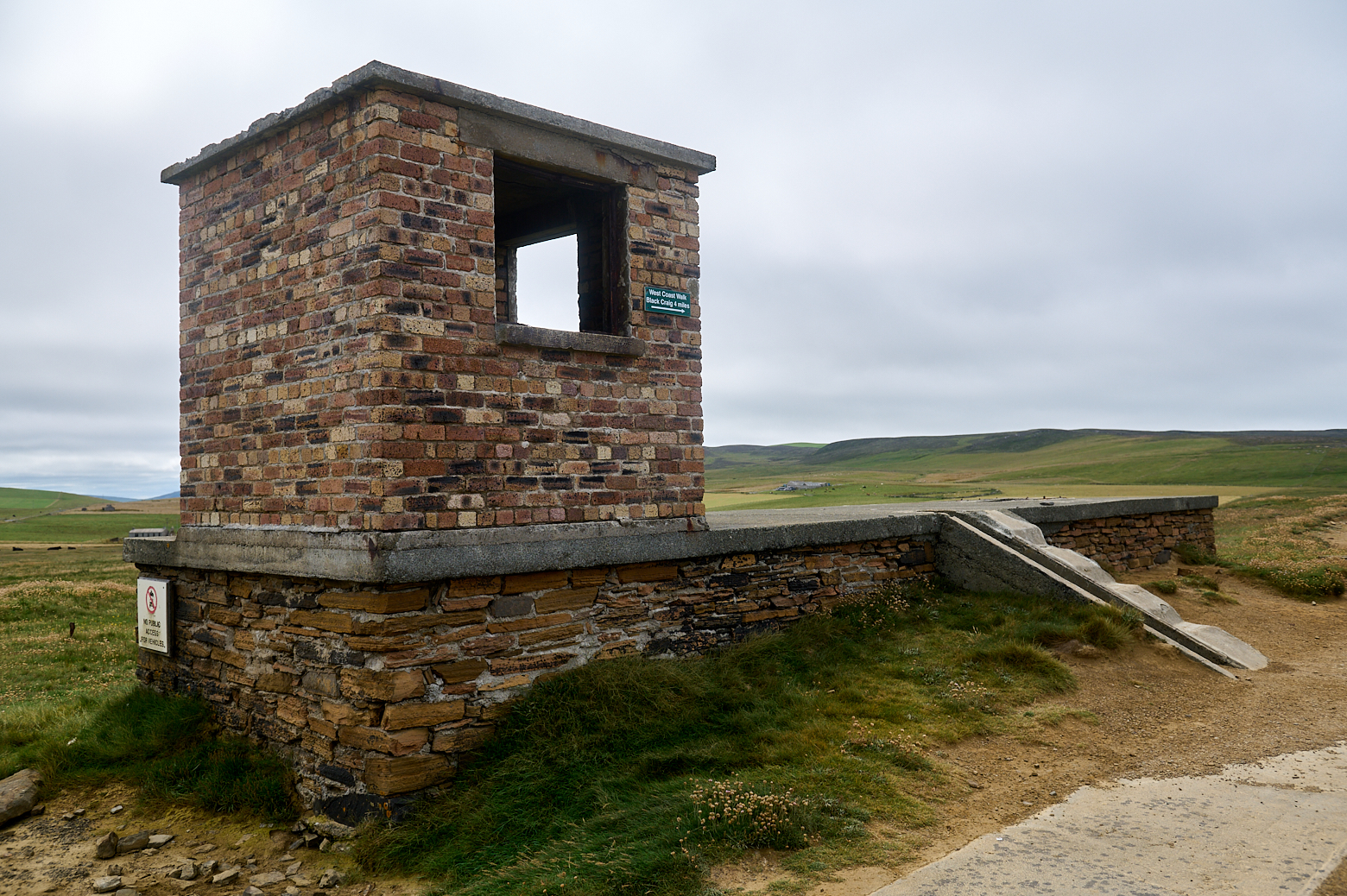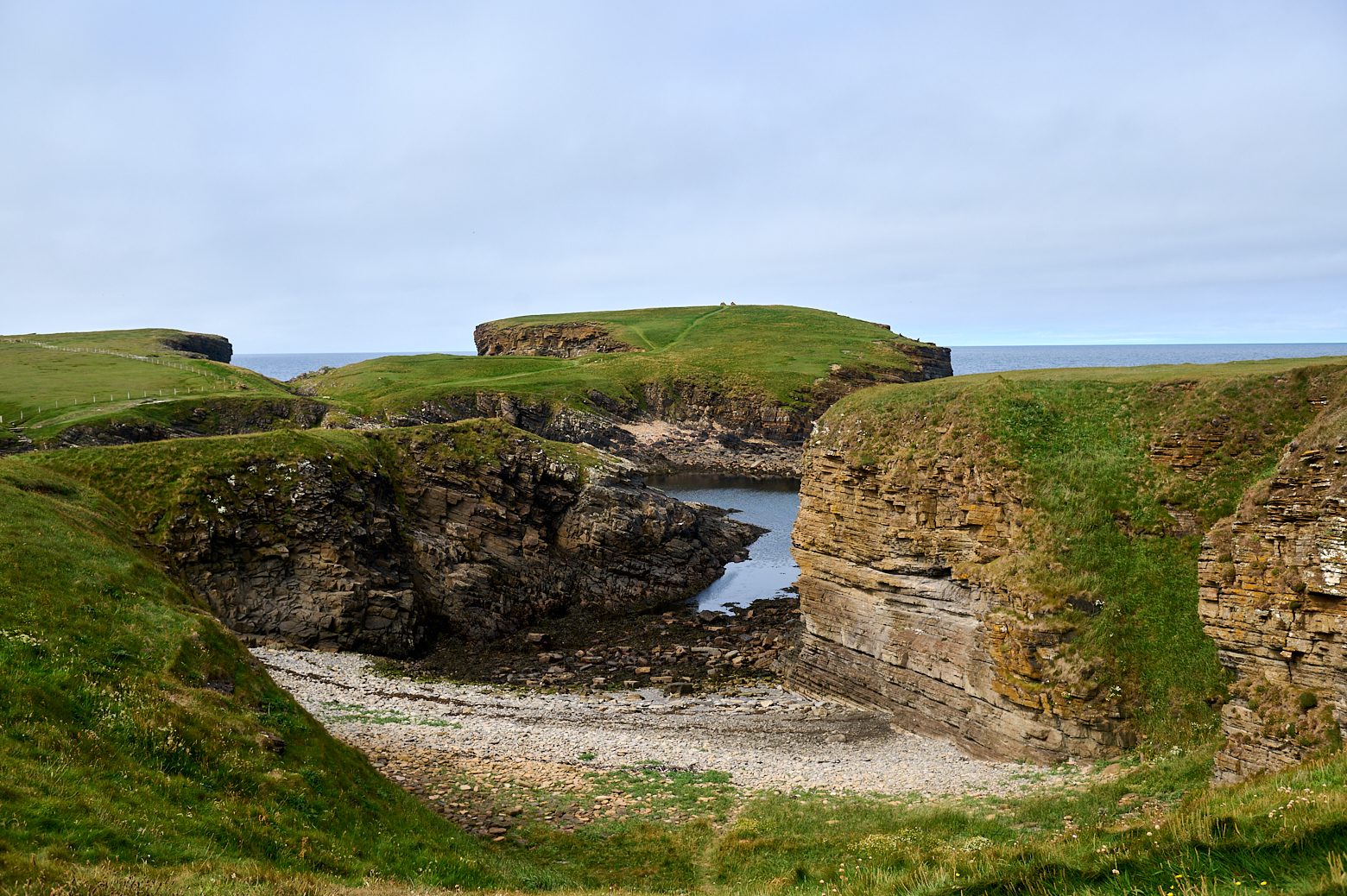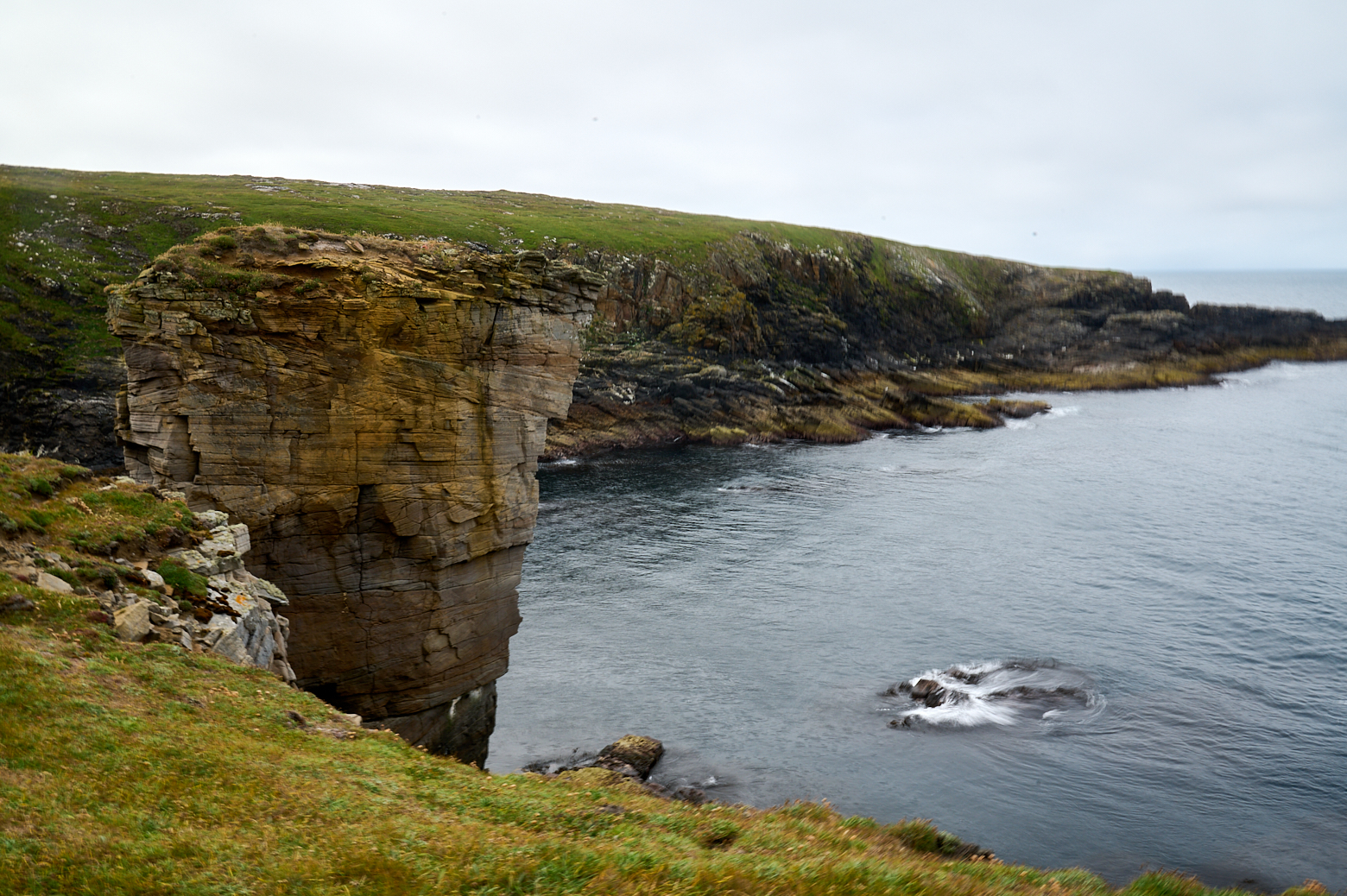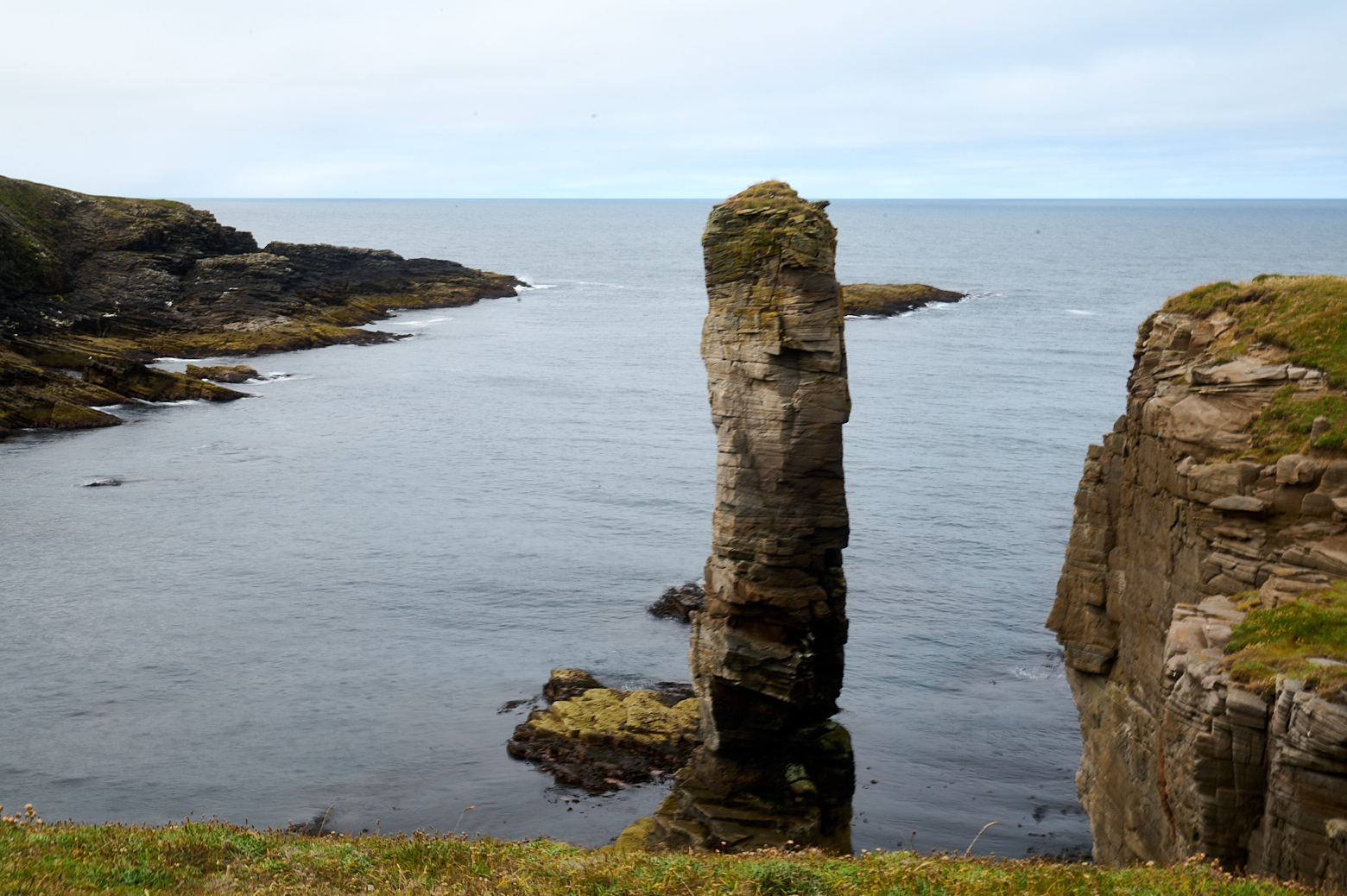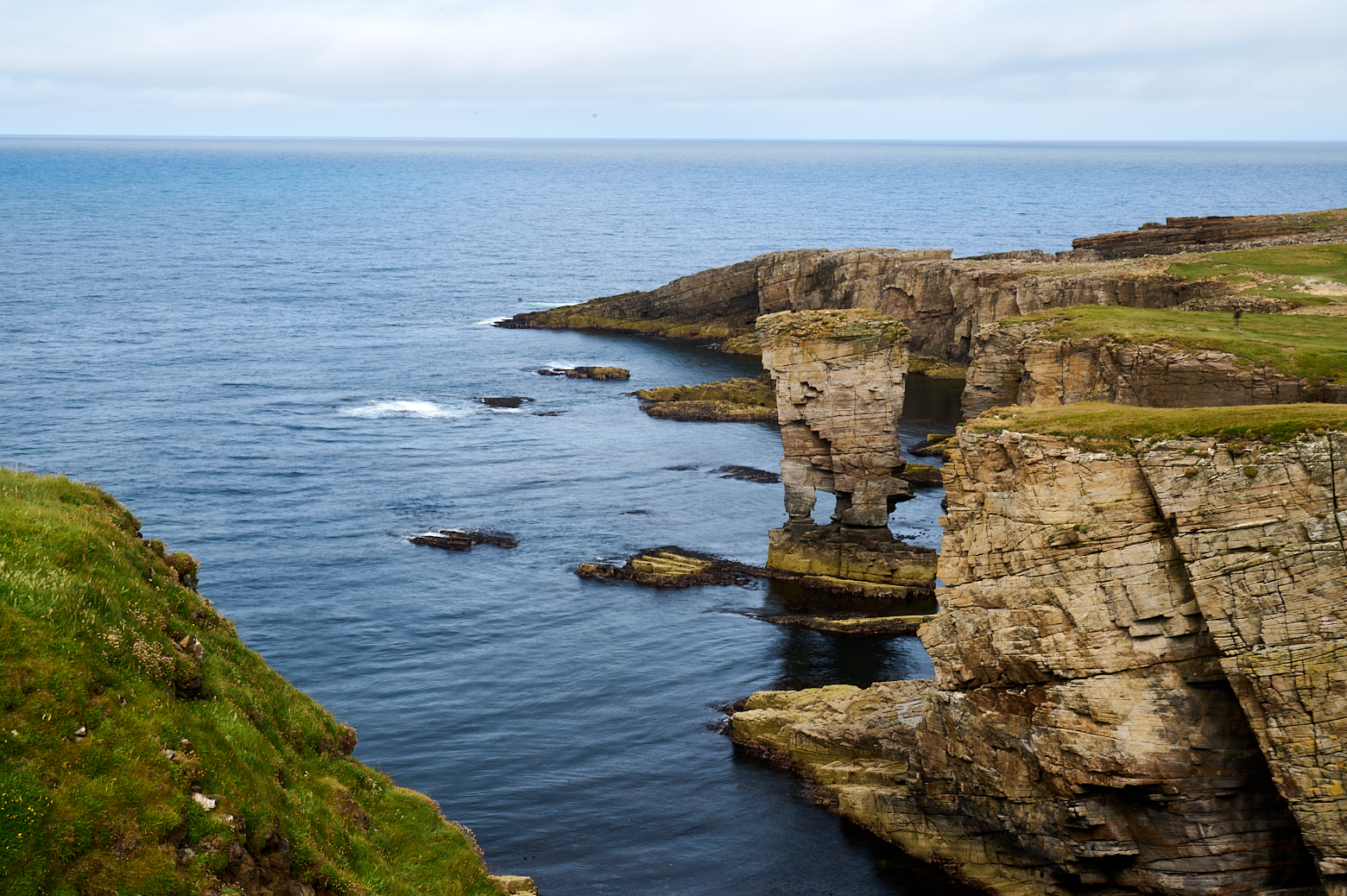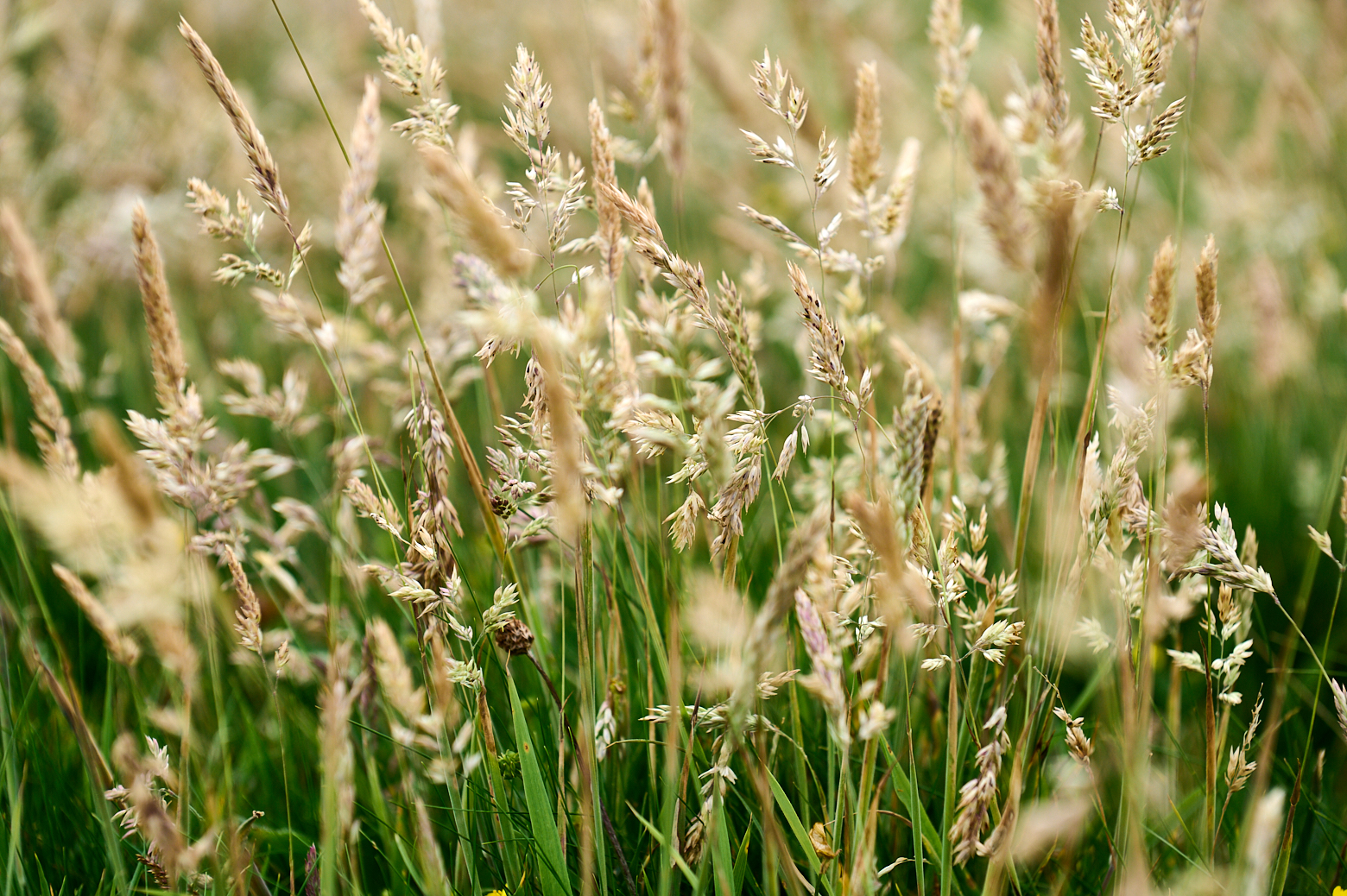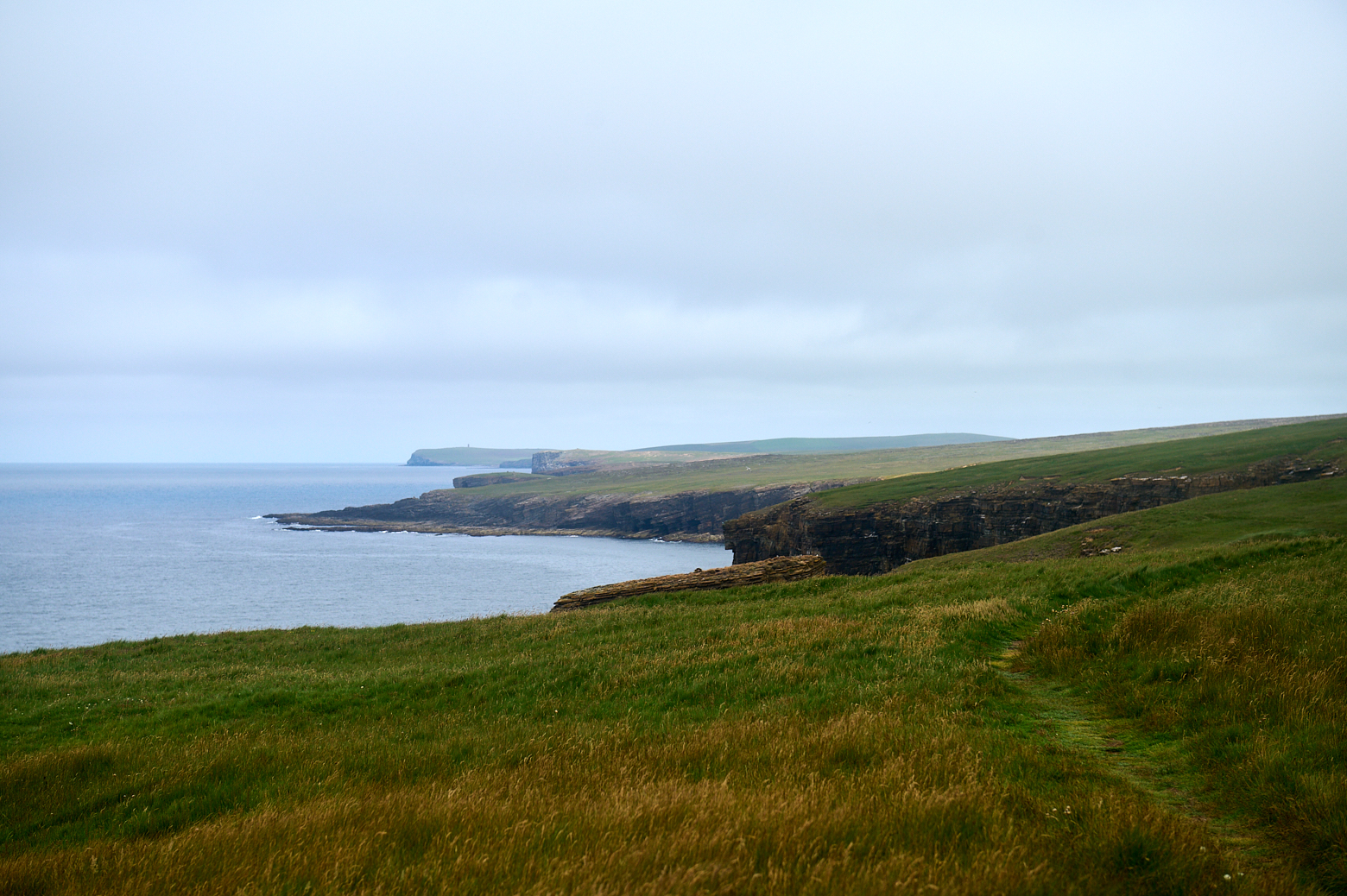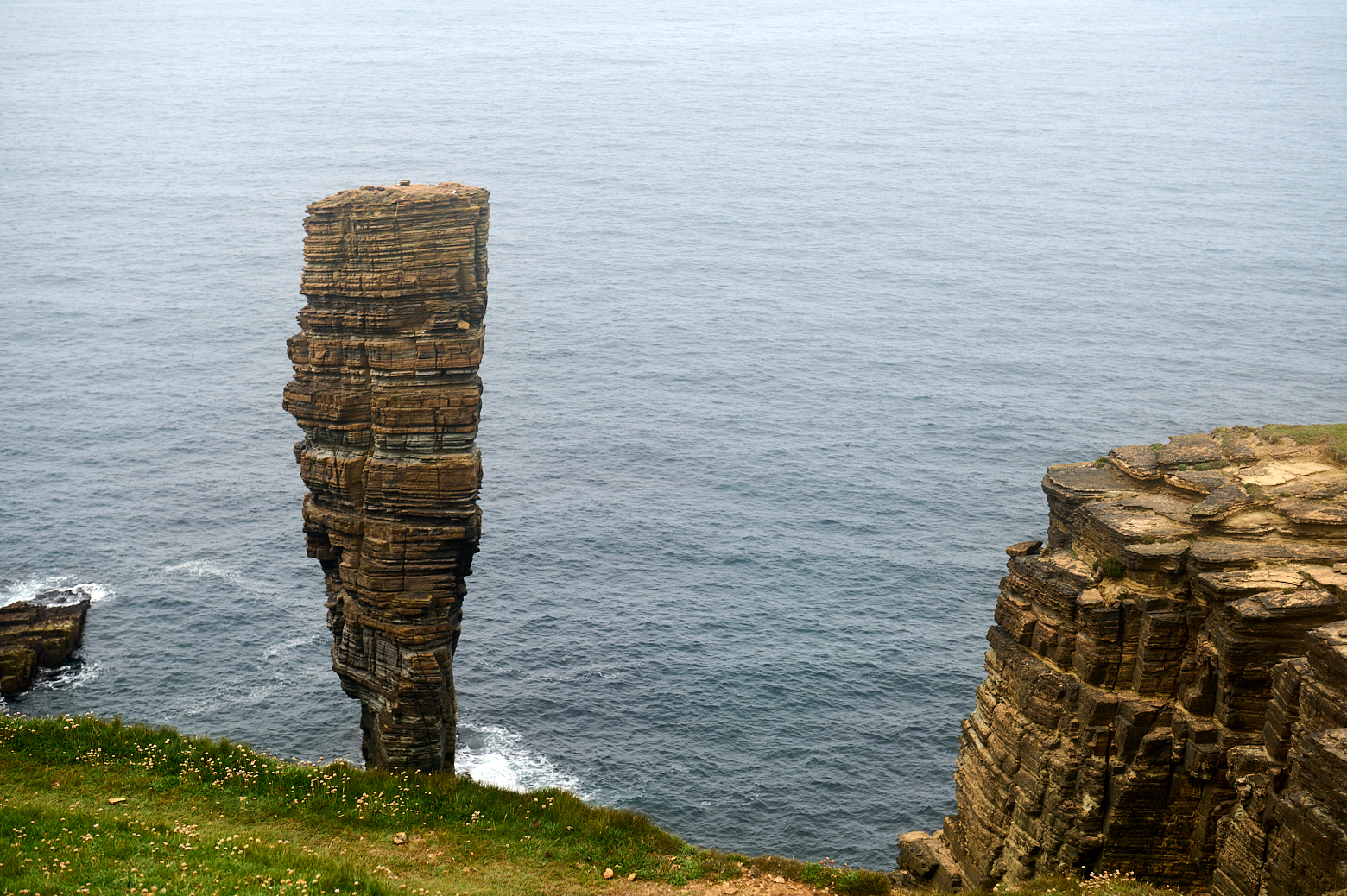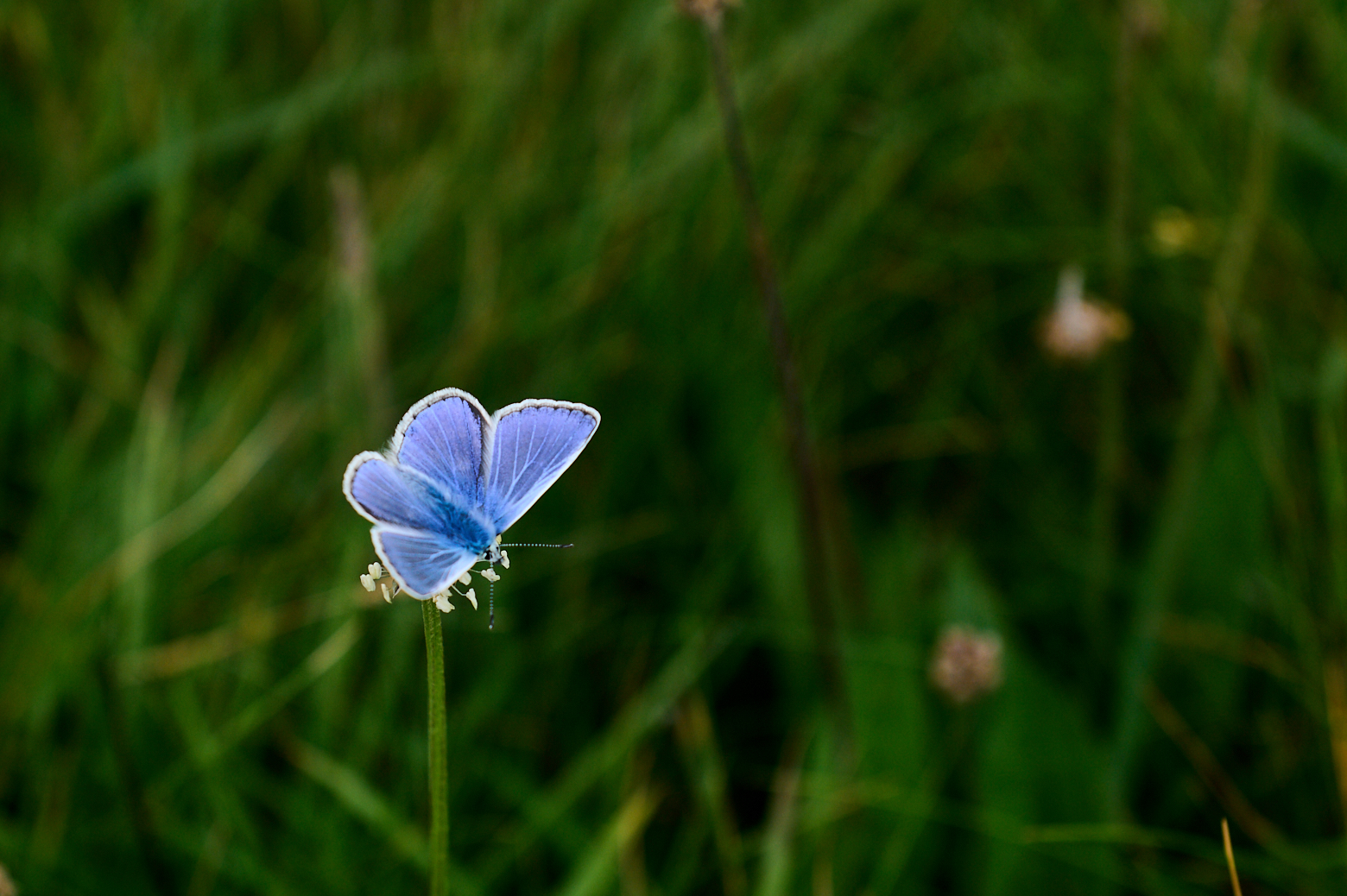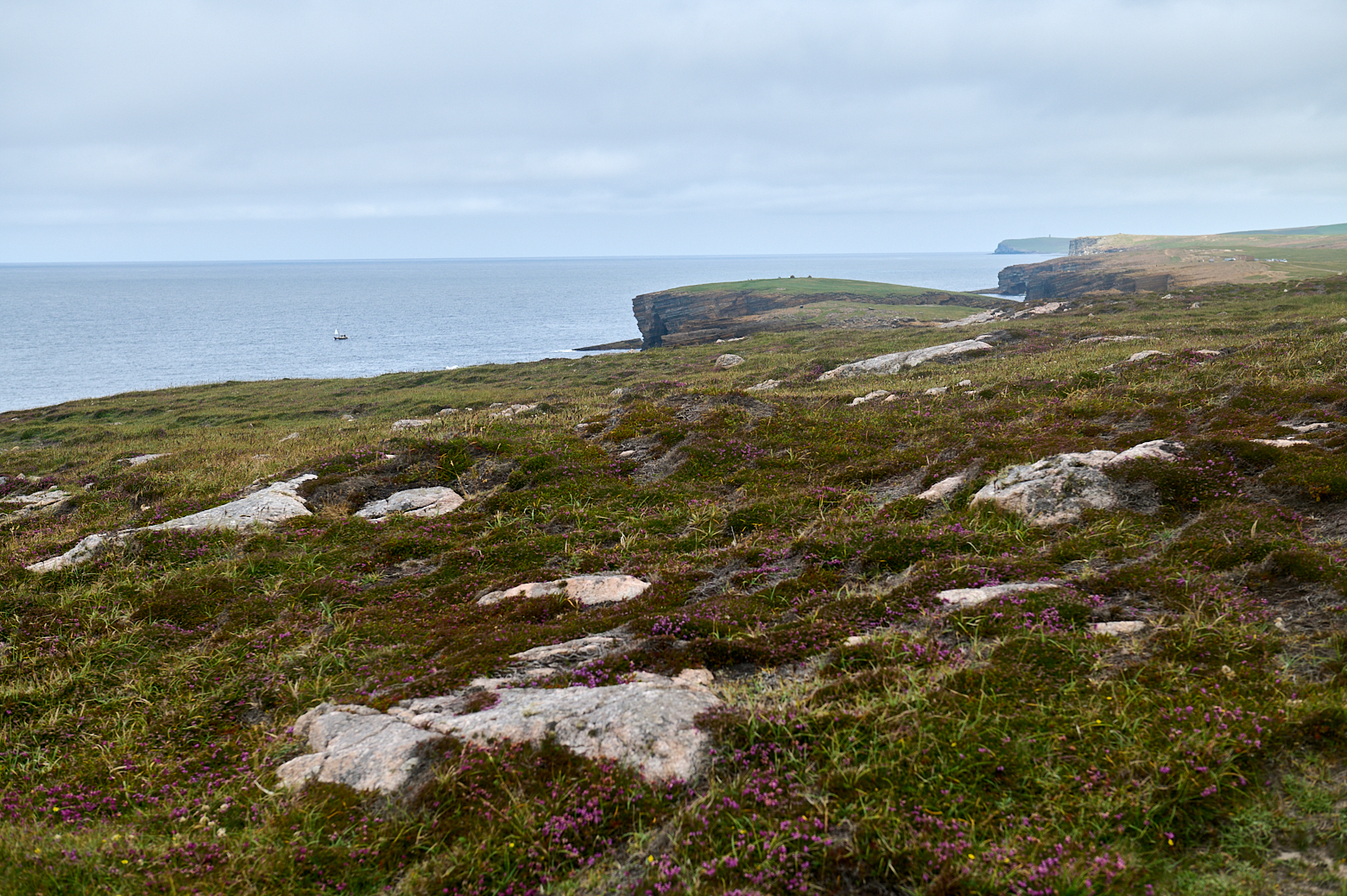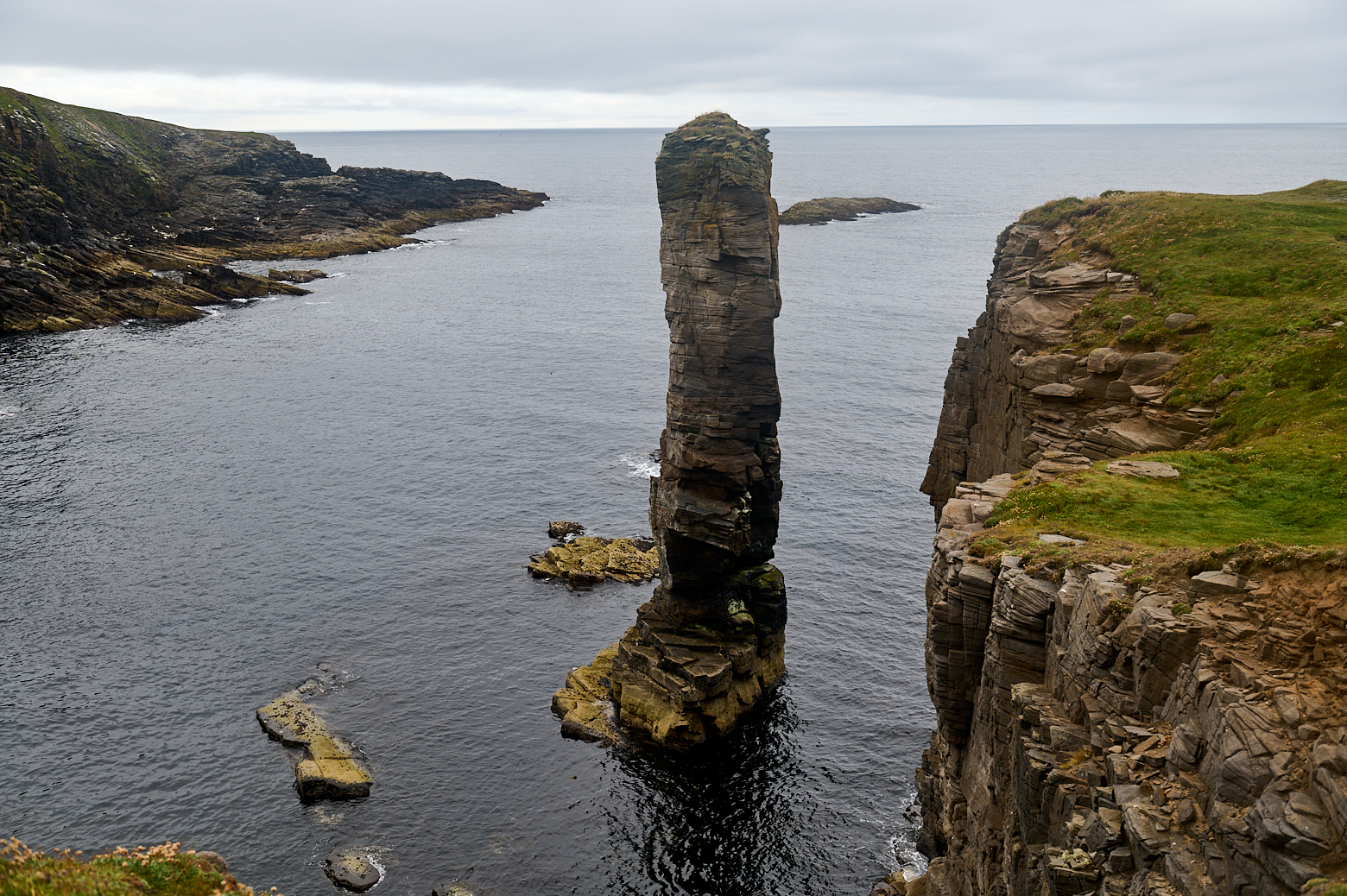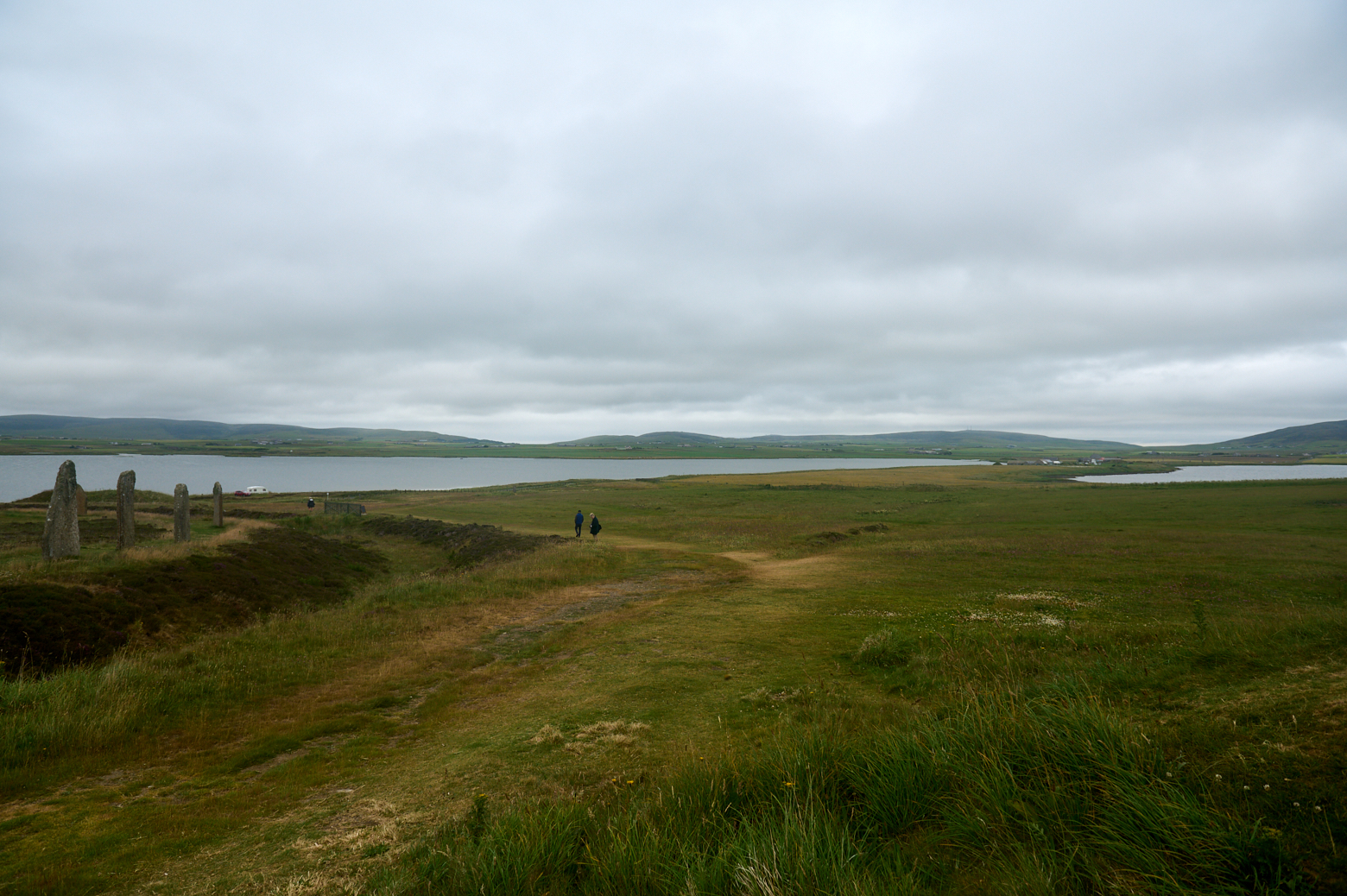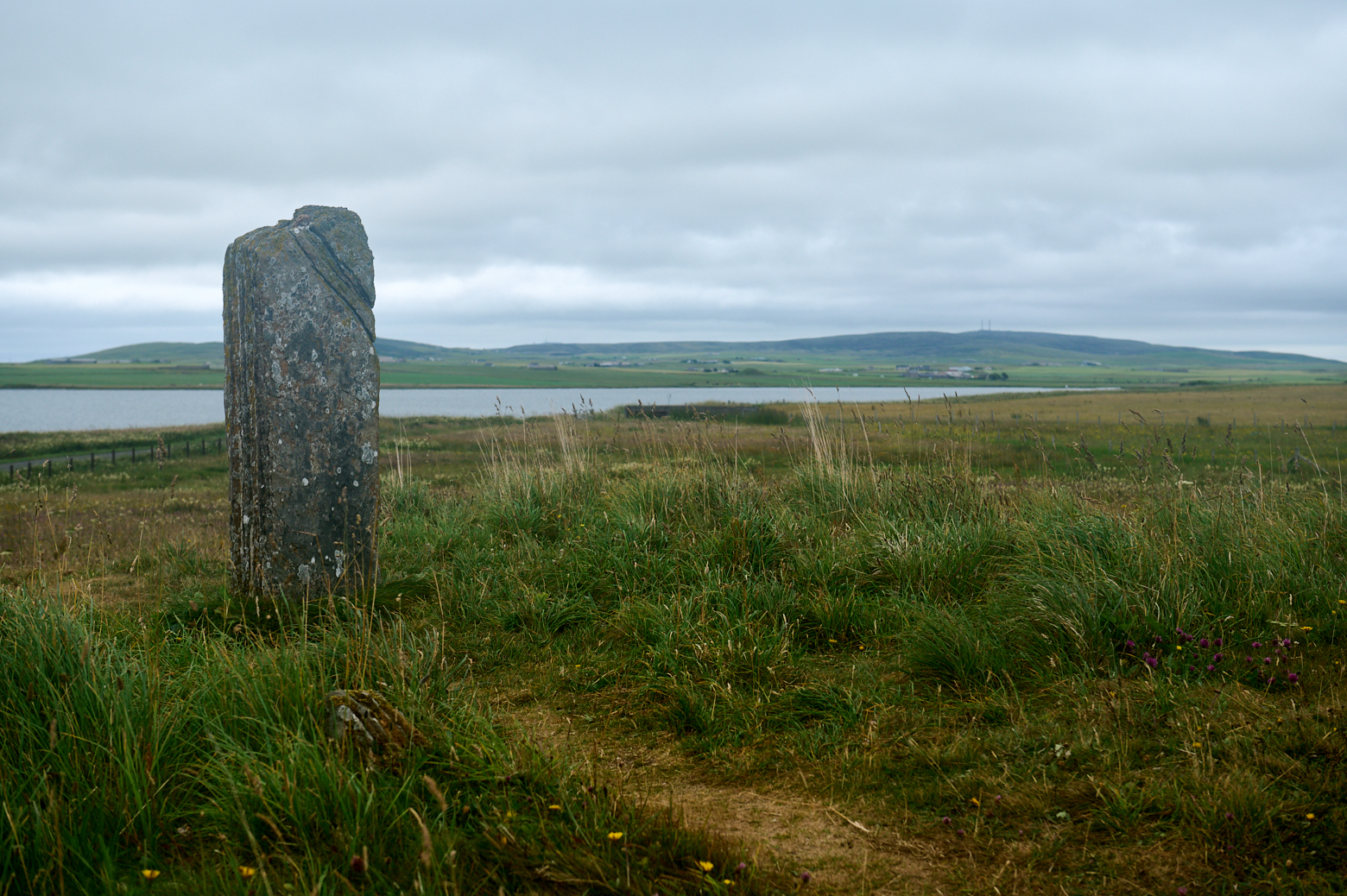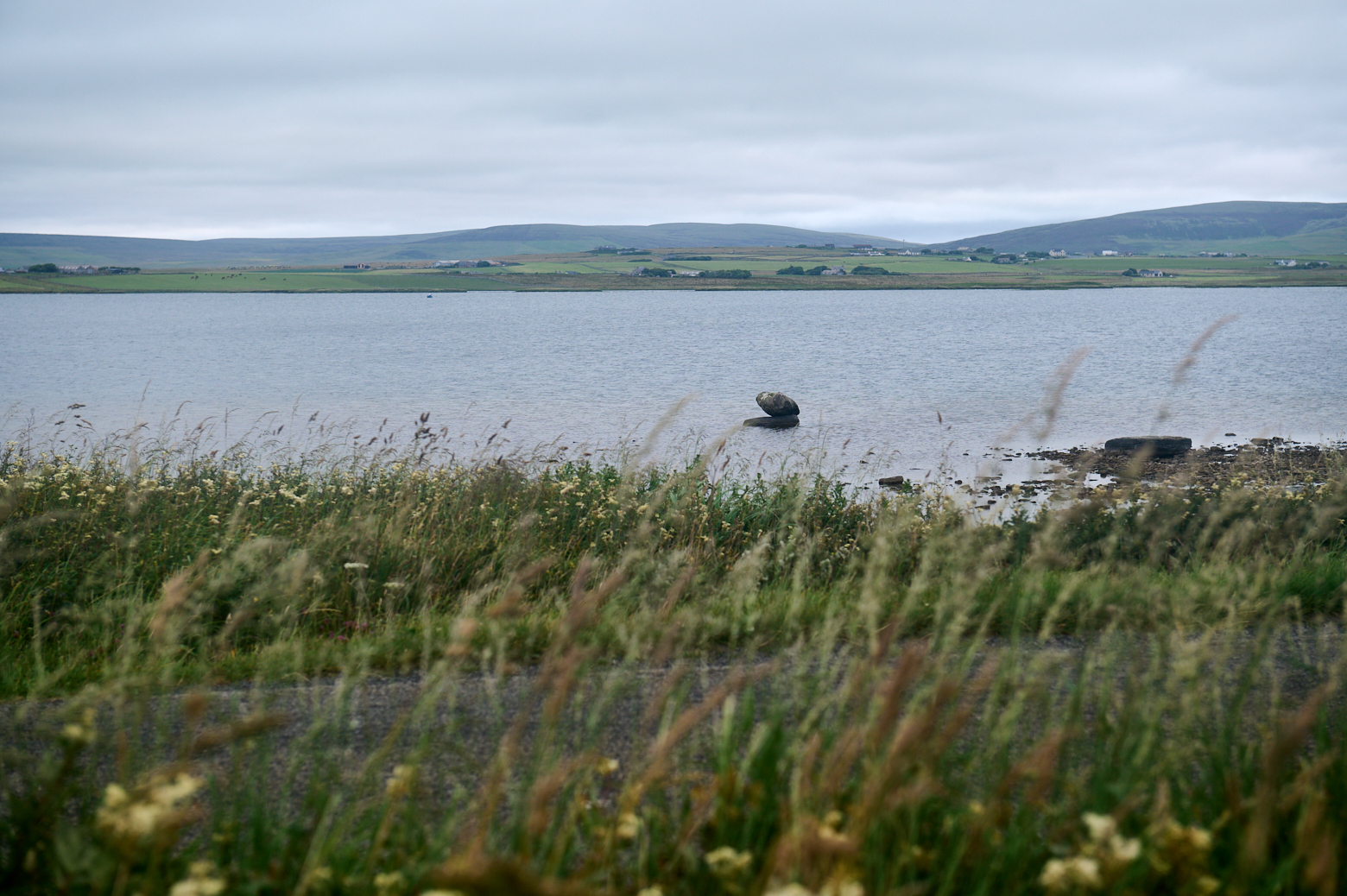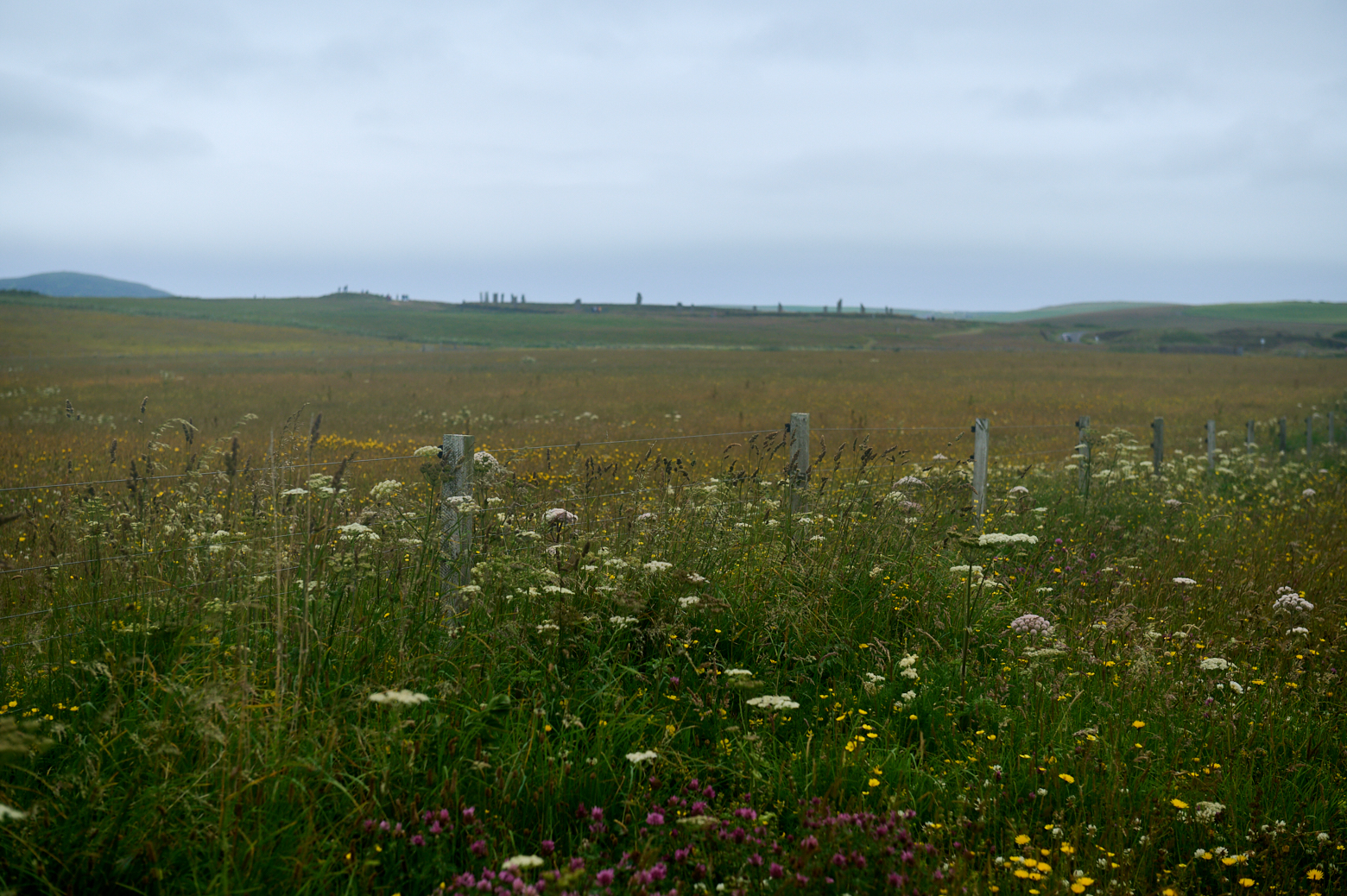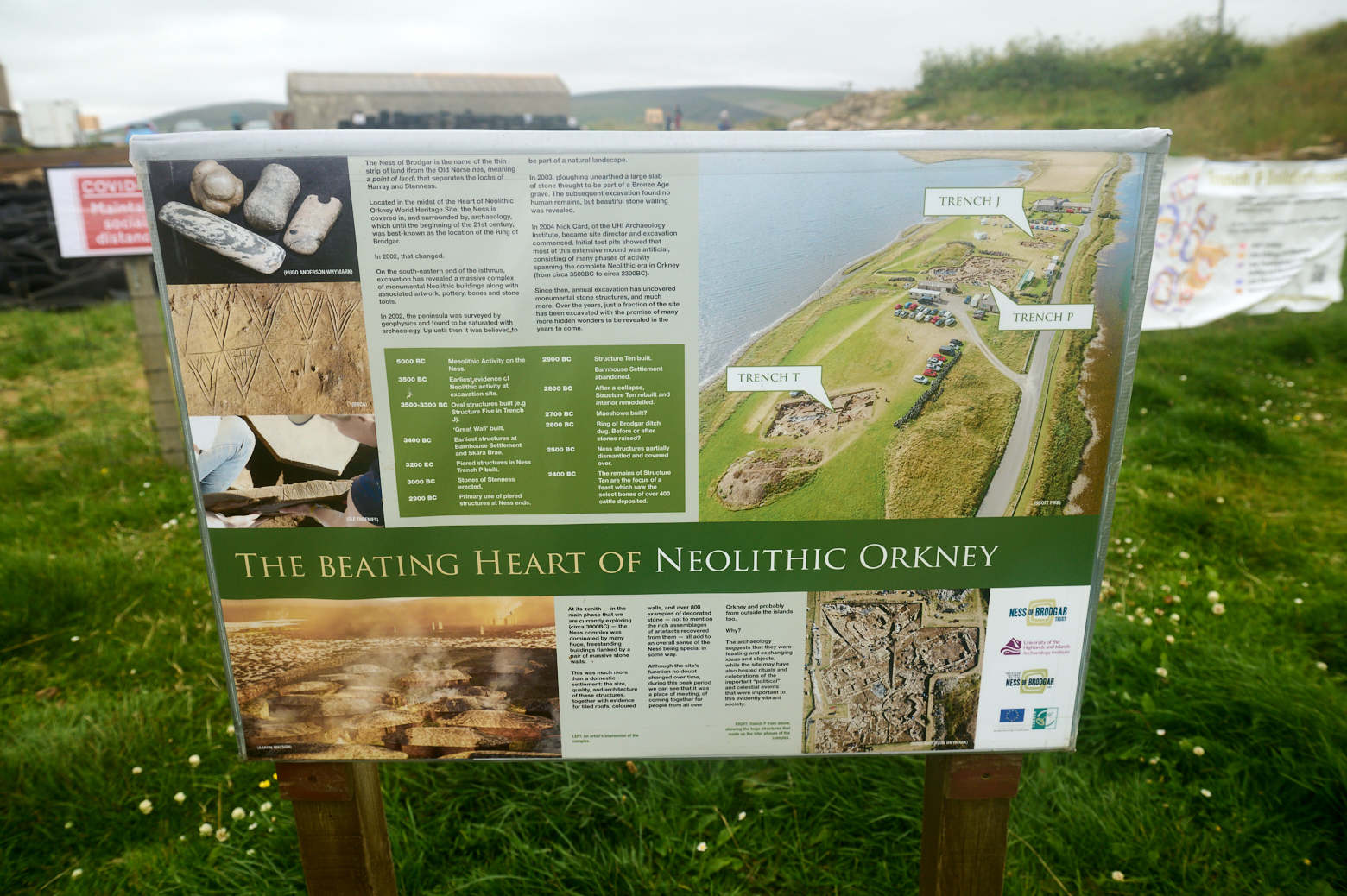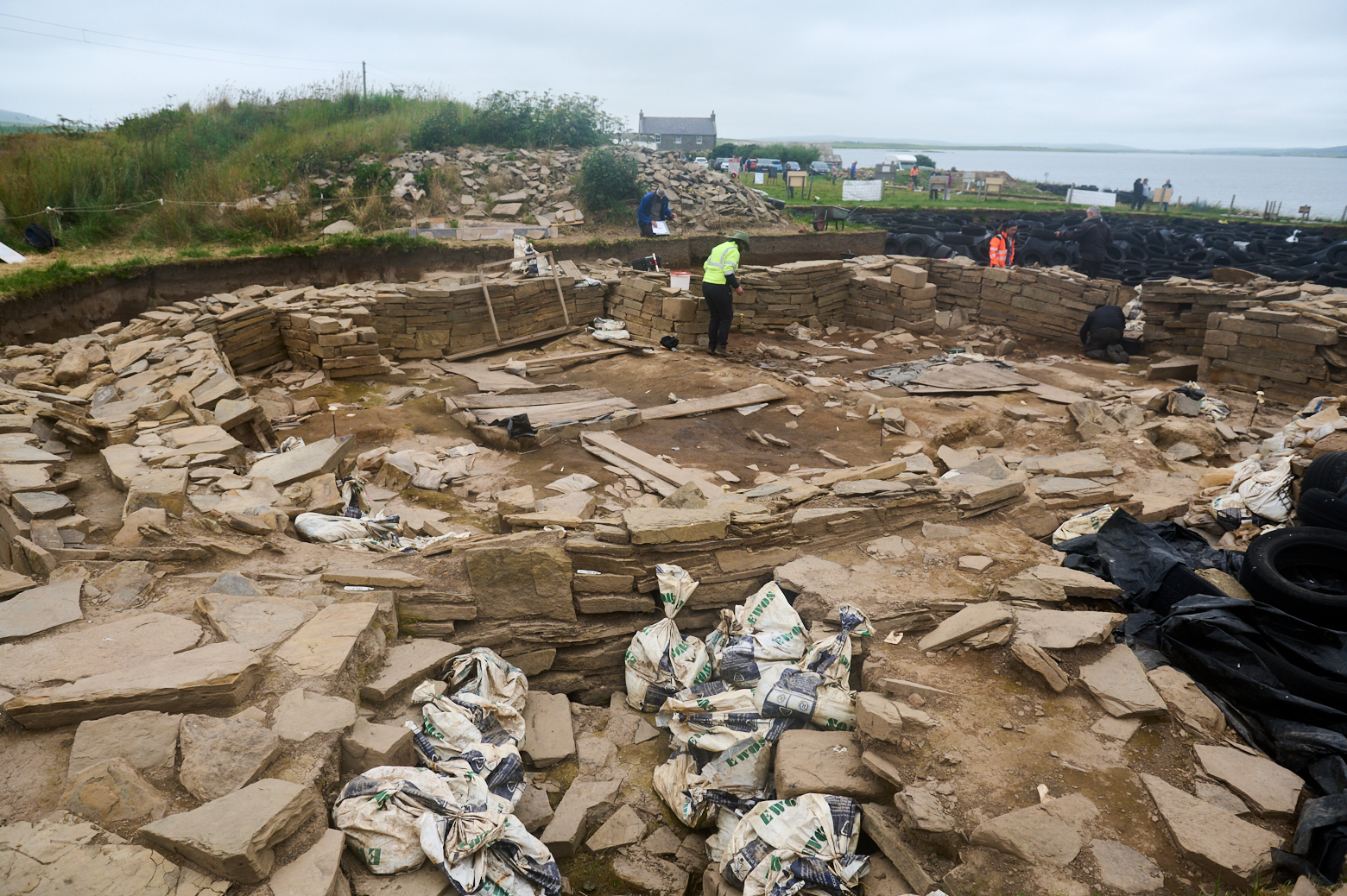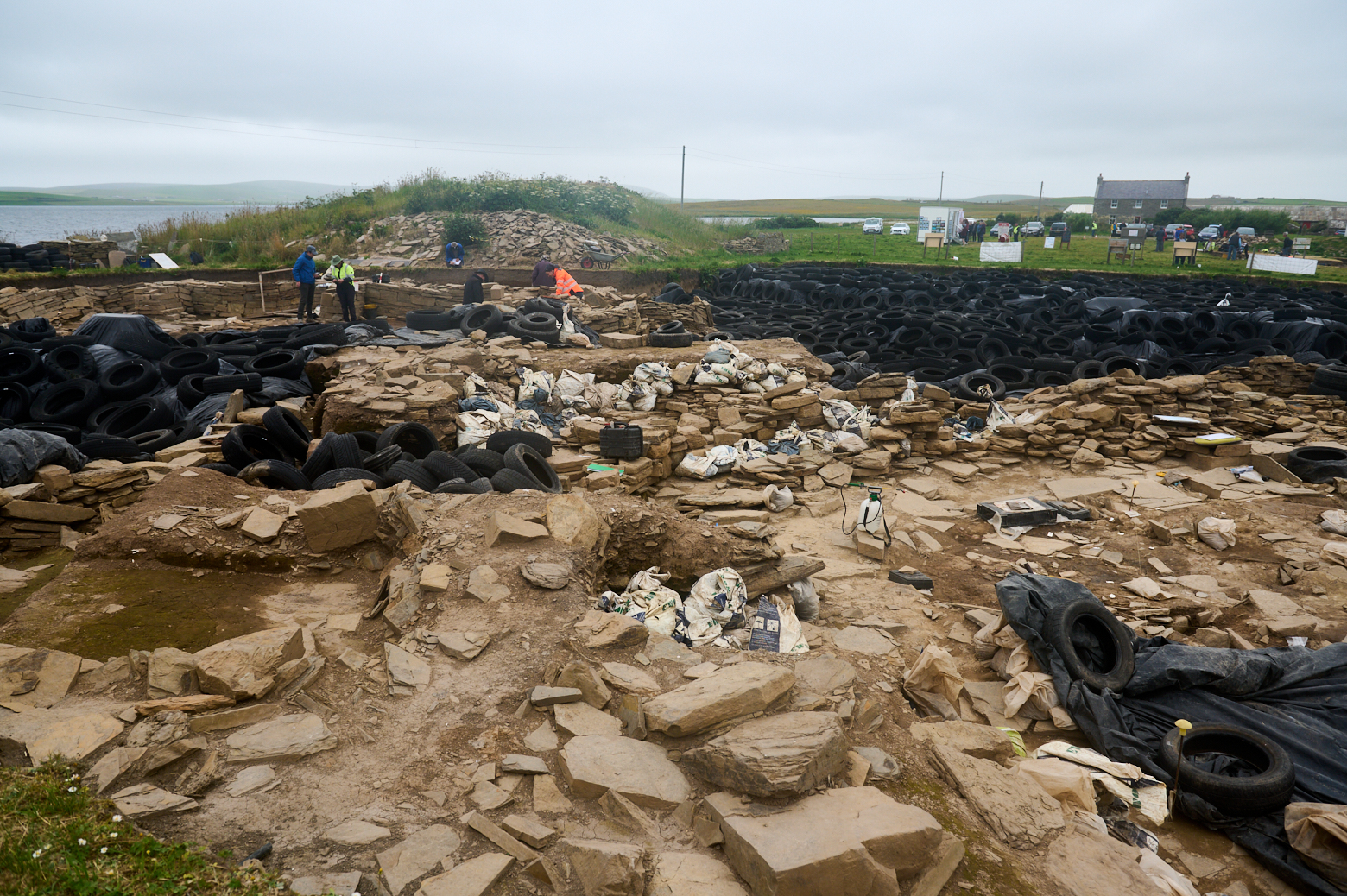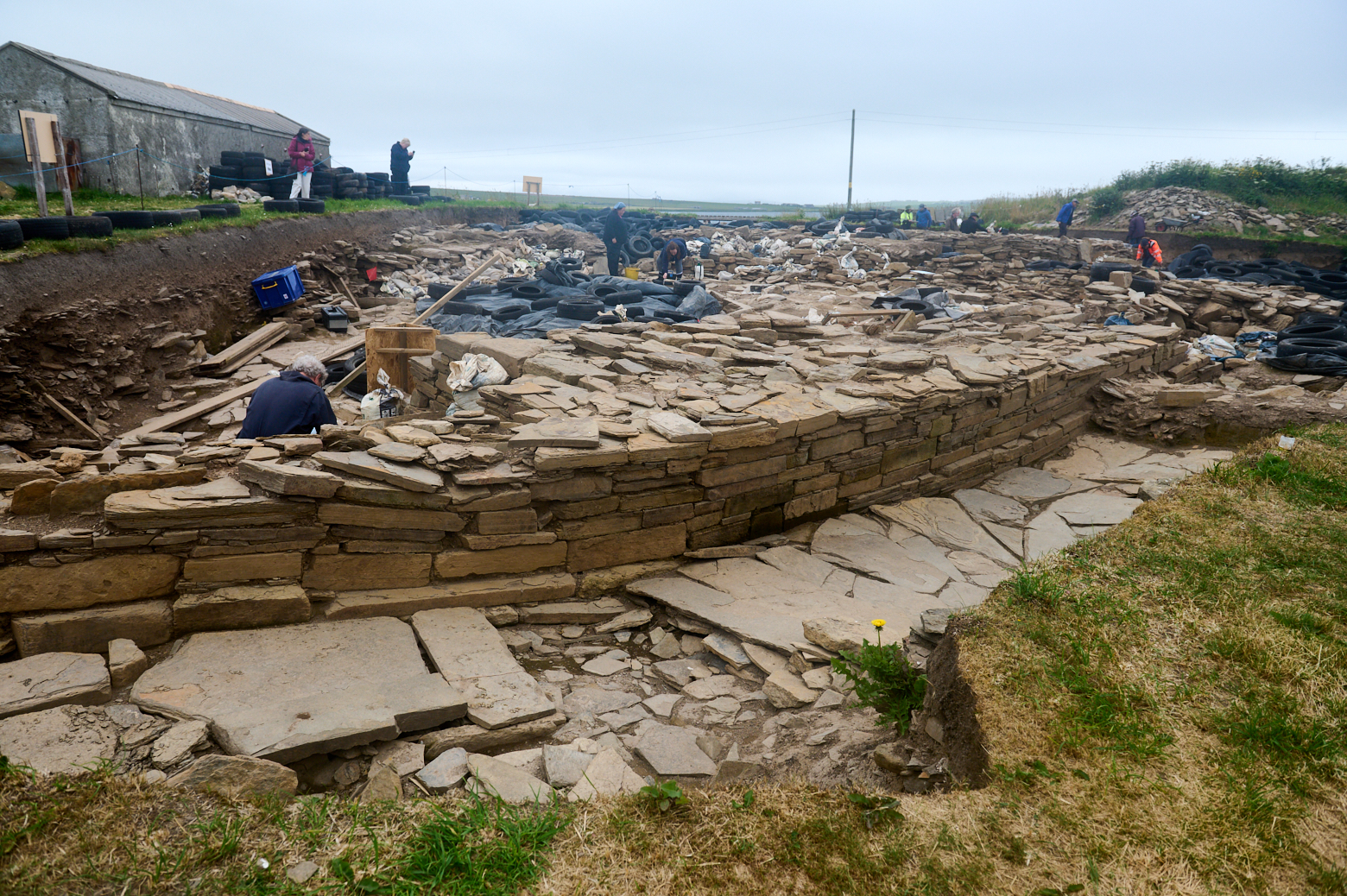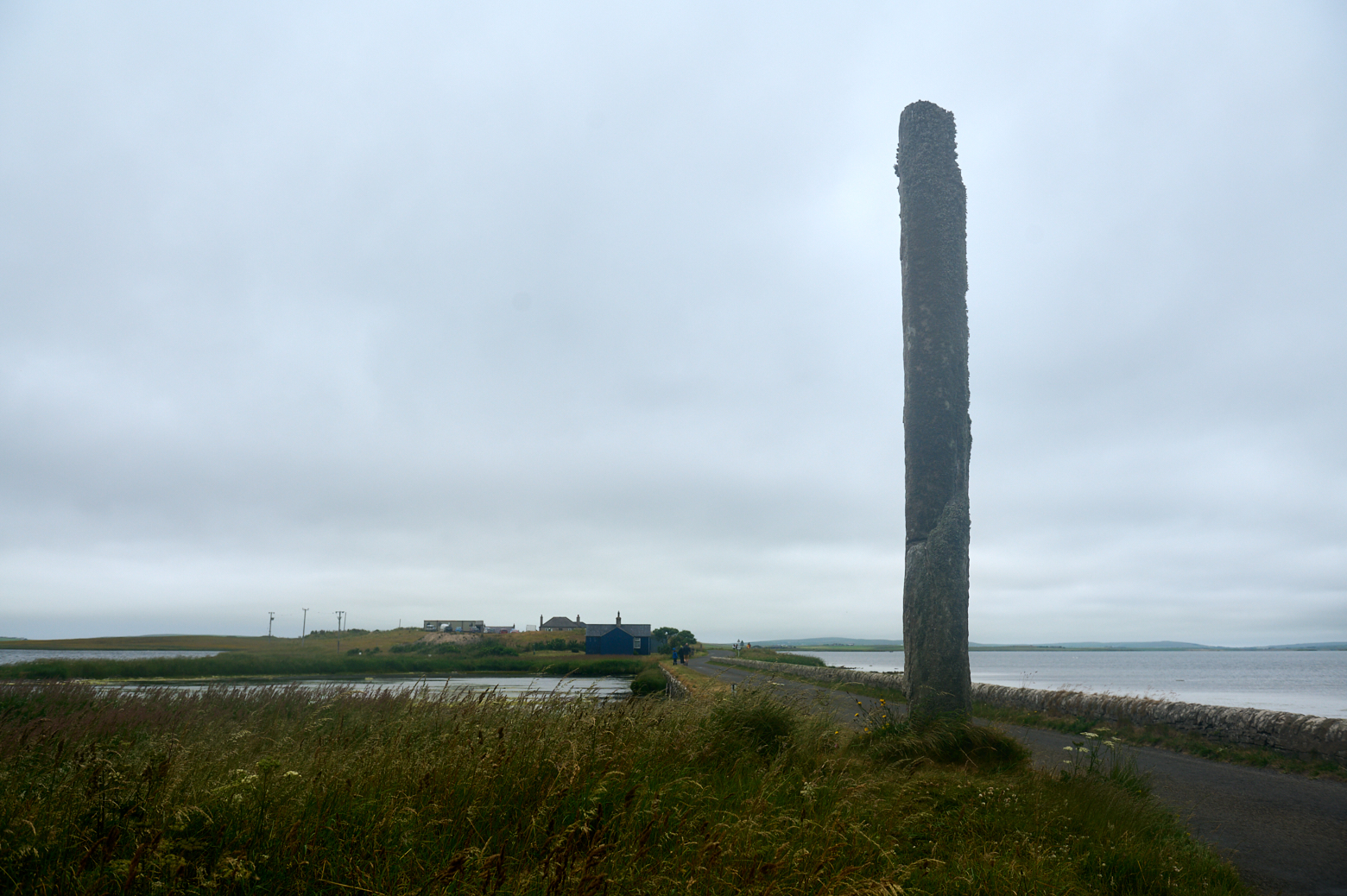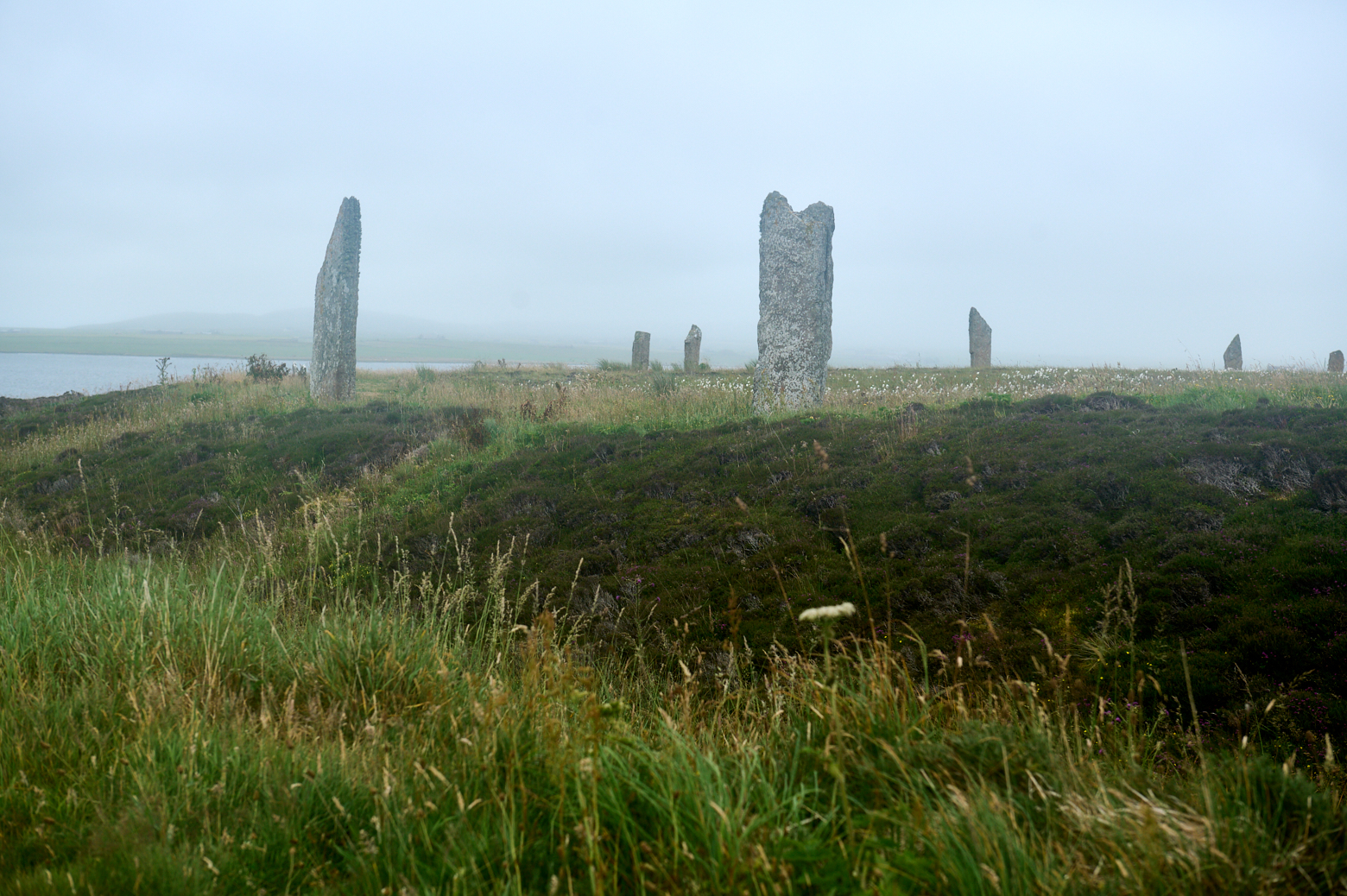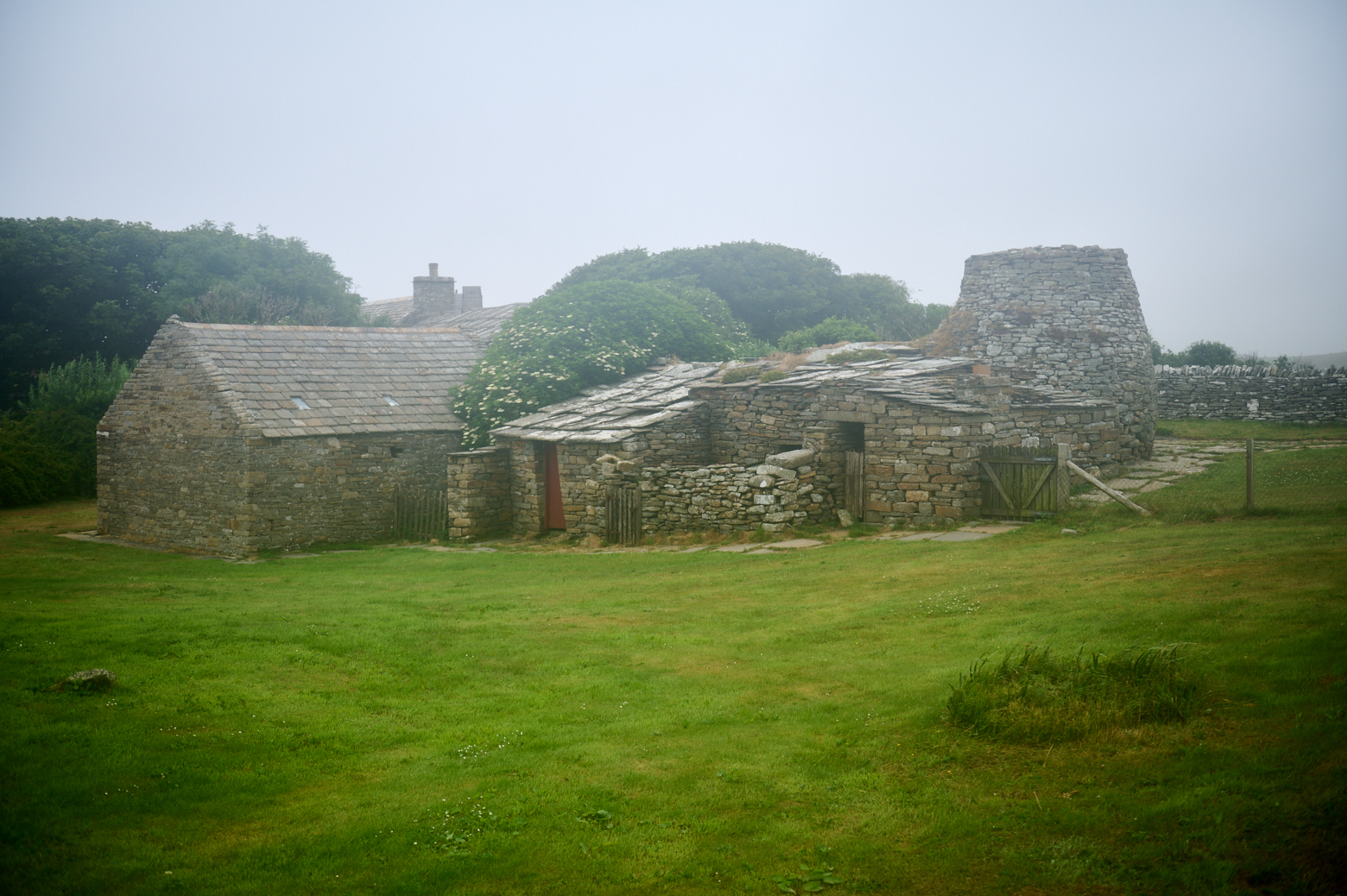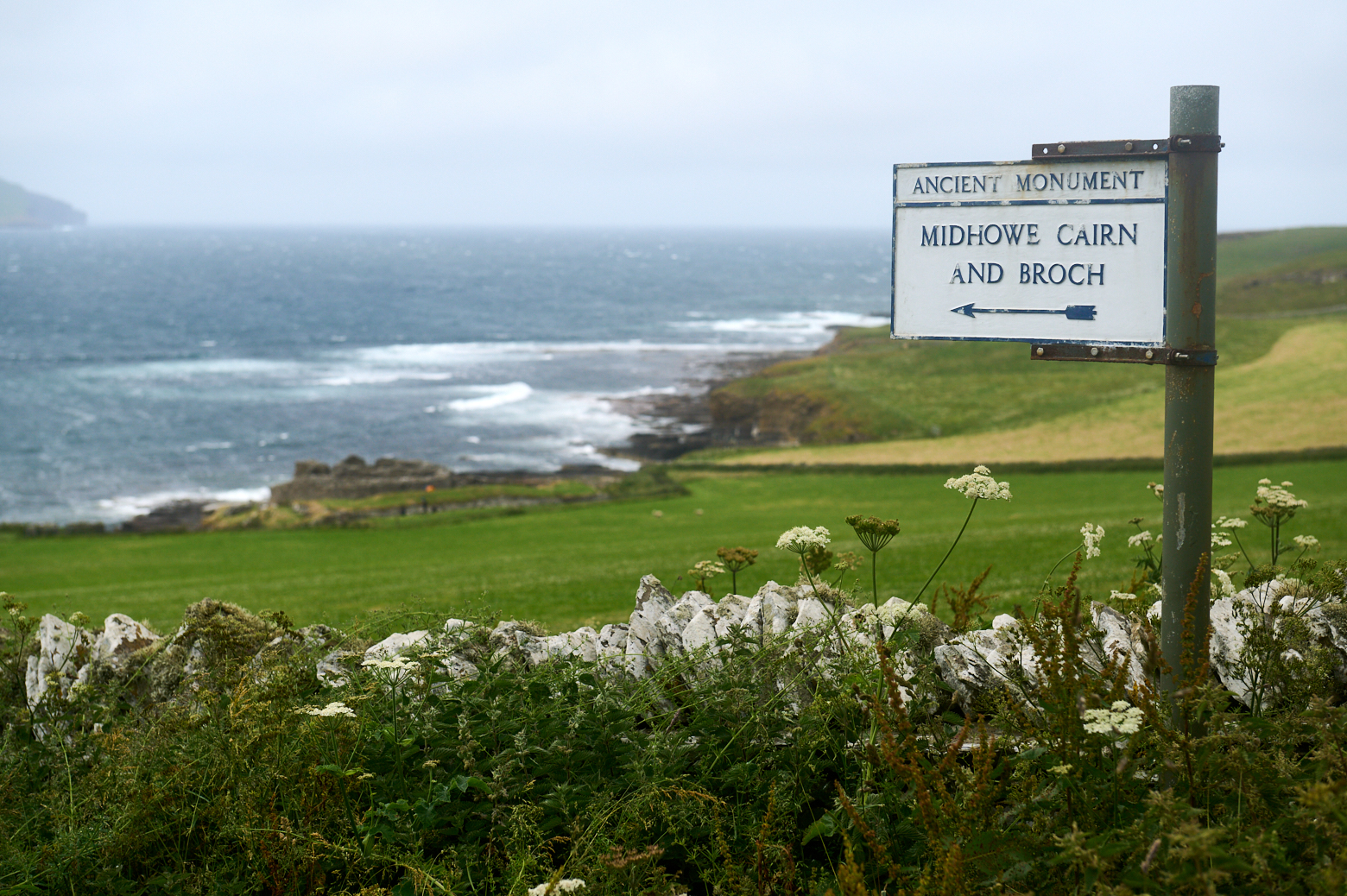
The weather got wilder when I reached my second visiting spot – Midhowe Cairn and Broch, one can see the broch on the shoreline. It was just a short walk down from the small parking space to the coastline to reach a small settlement, the cairn and the broch.
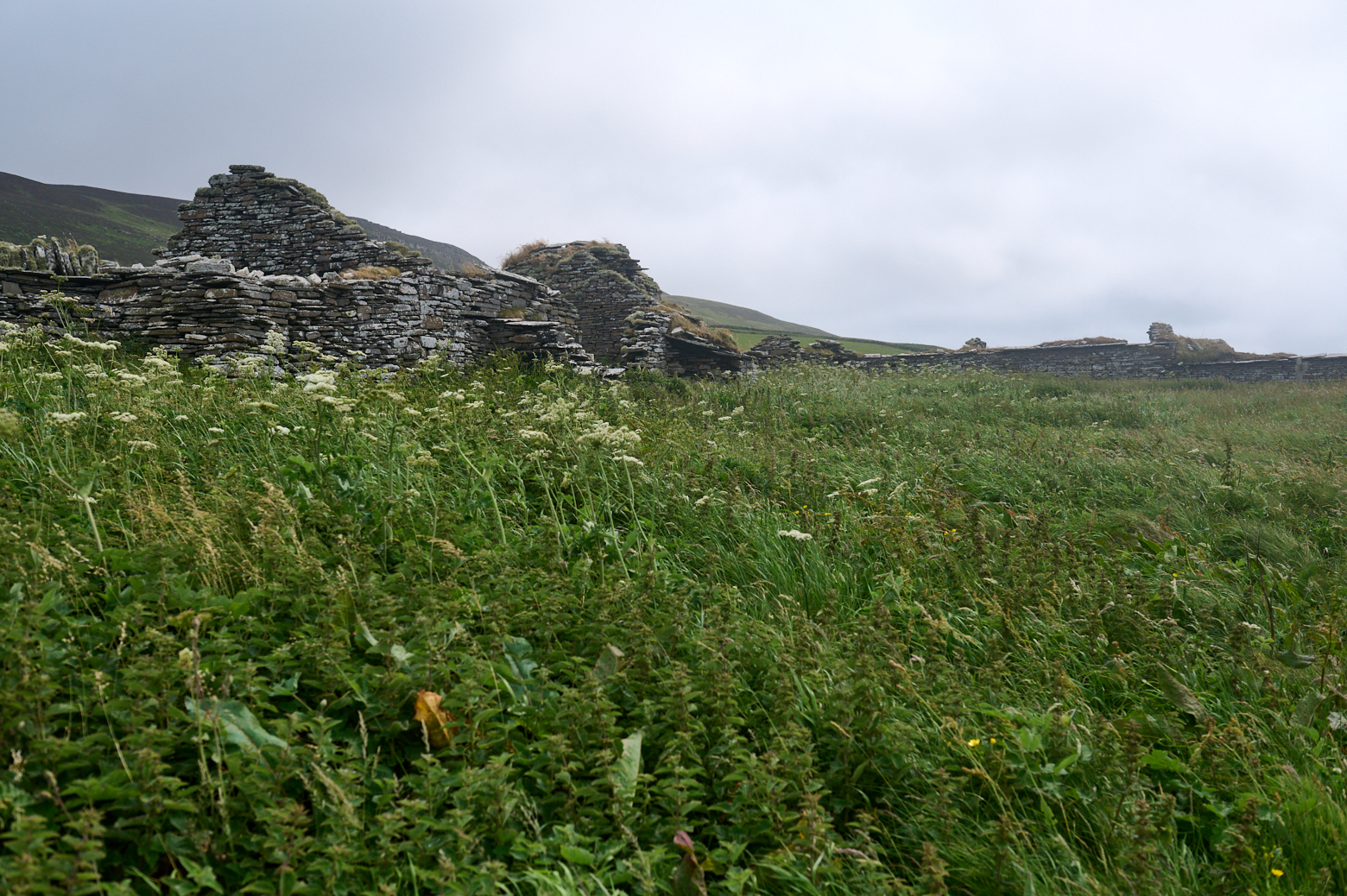
Midhowe settlement & church
When I arrived at the coastline I turned left toward the ruins of a couple of crofts and a church, I couldn´t find much information about these ruins, but still enjoyed the walk along the coast and seeing these remains.
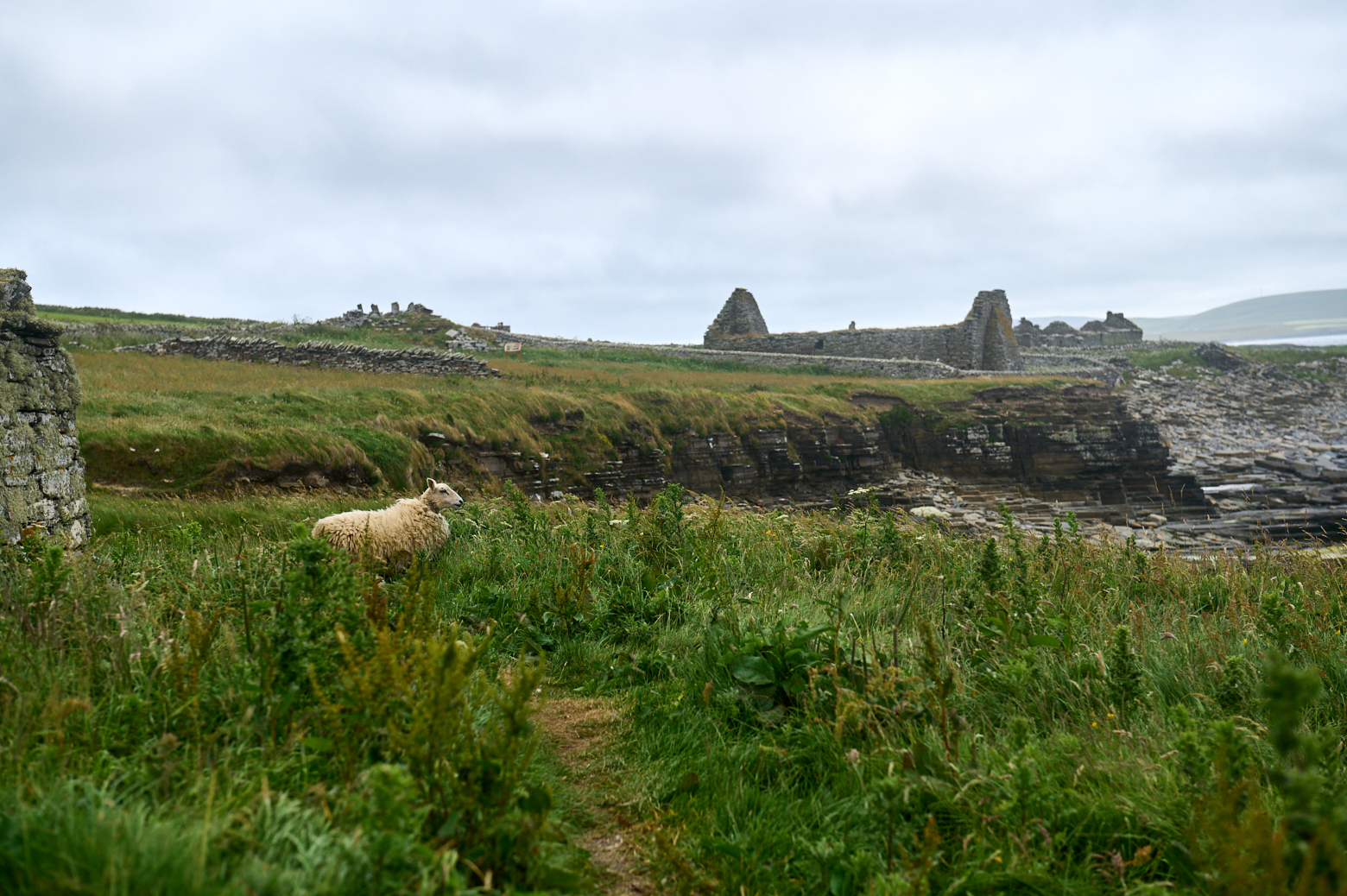
And I got company by a lovely sheep family.
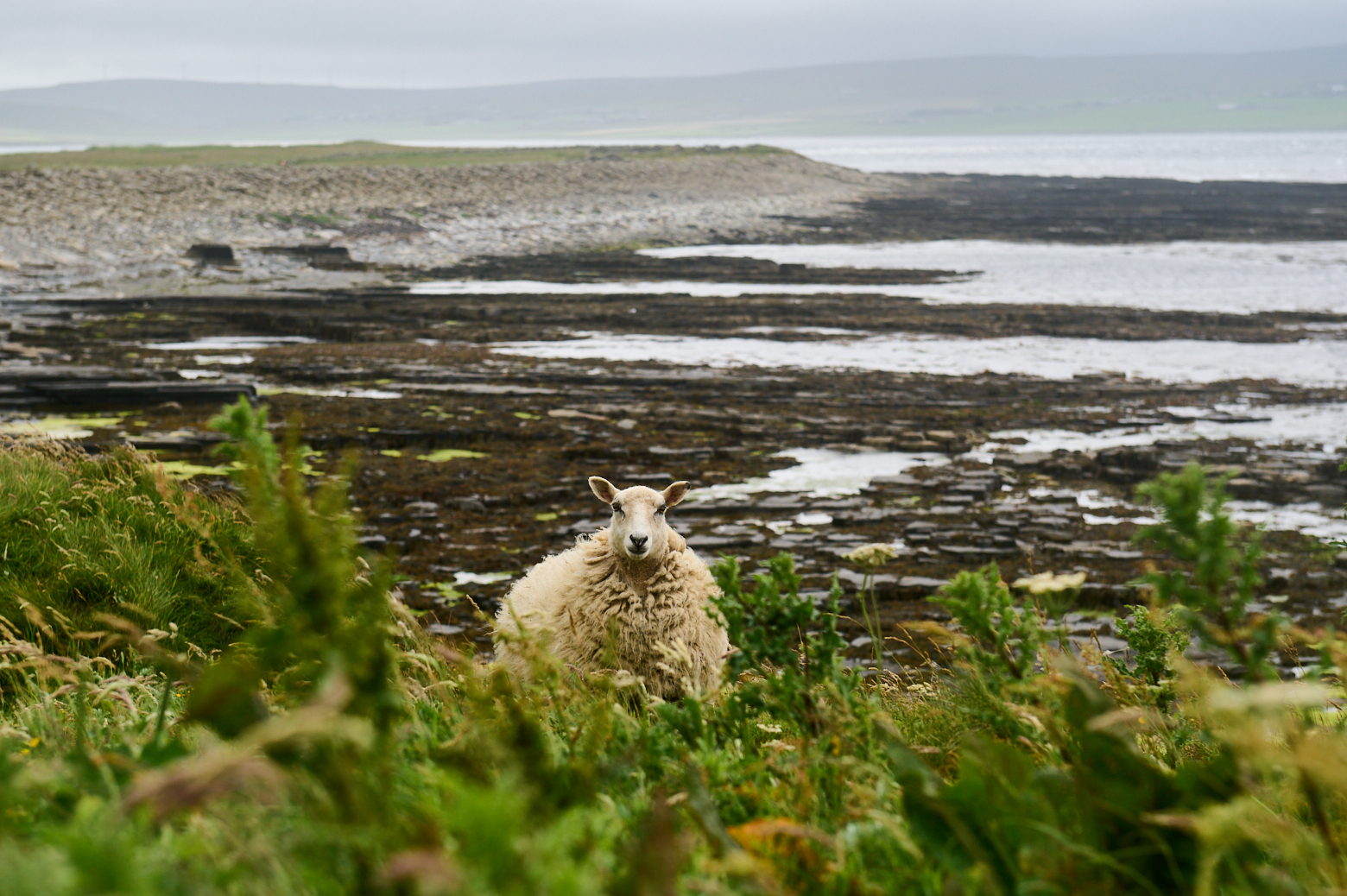
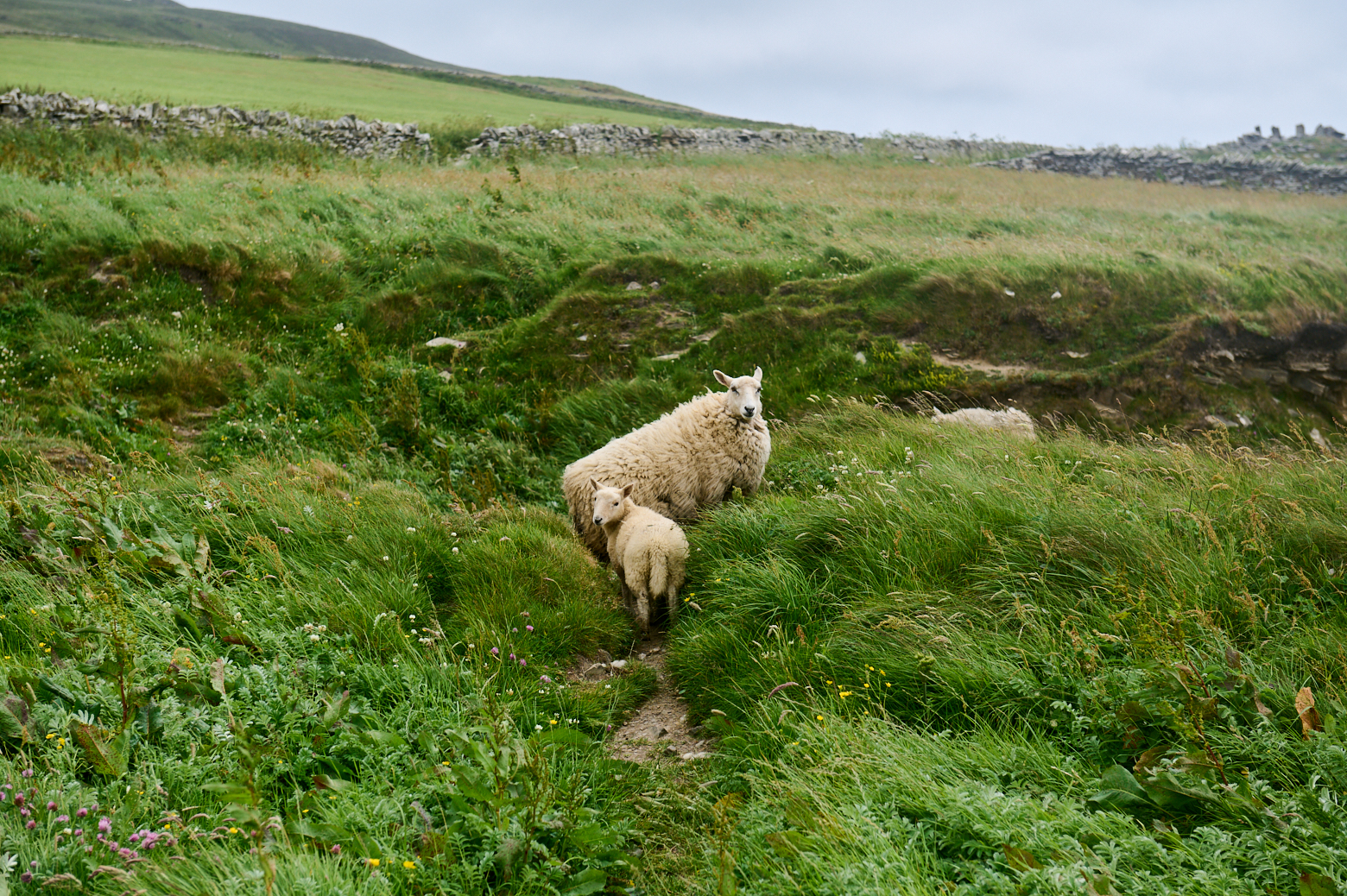

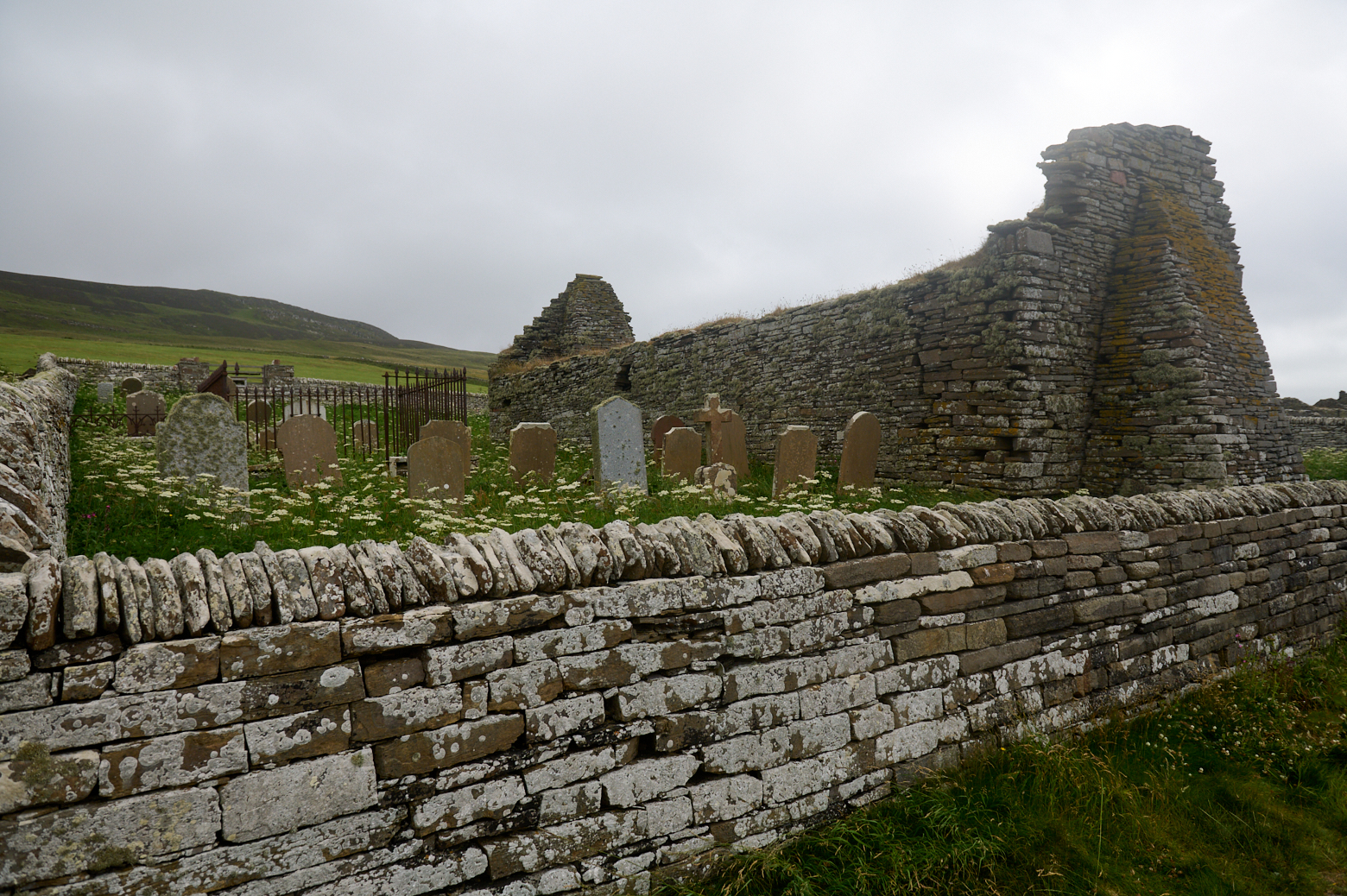
I think the church was one of the last remains and the place where I turned around and walked towards Midhowe Cairn.
Midhowe Cairn
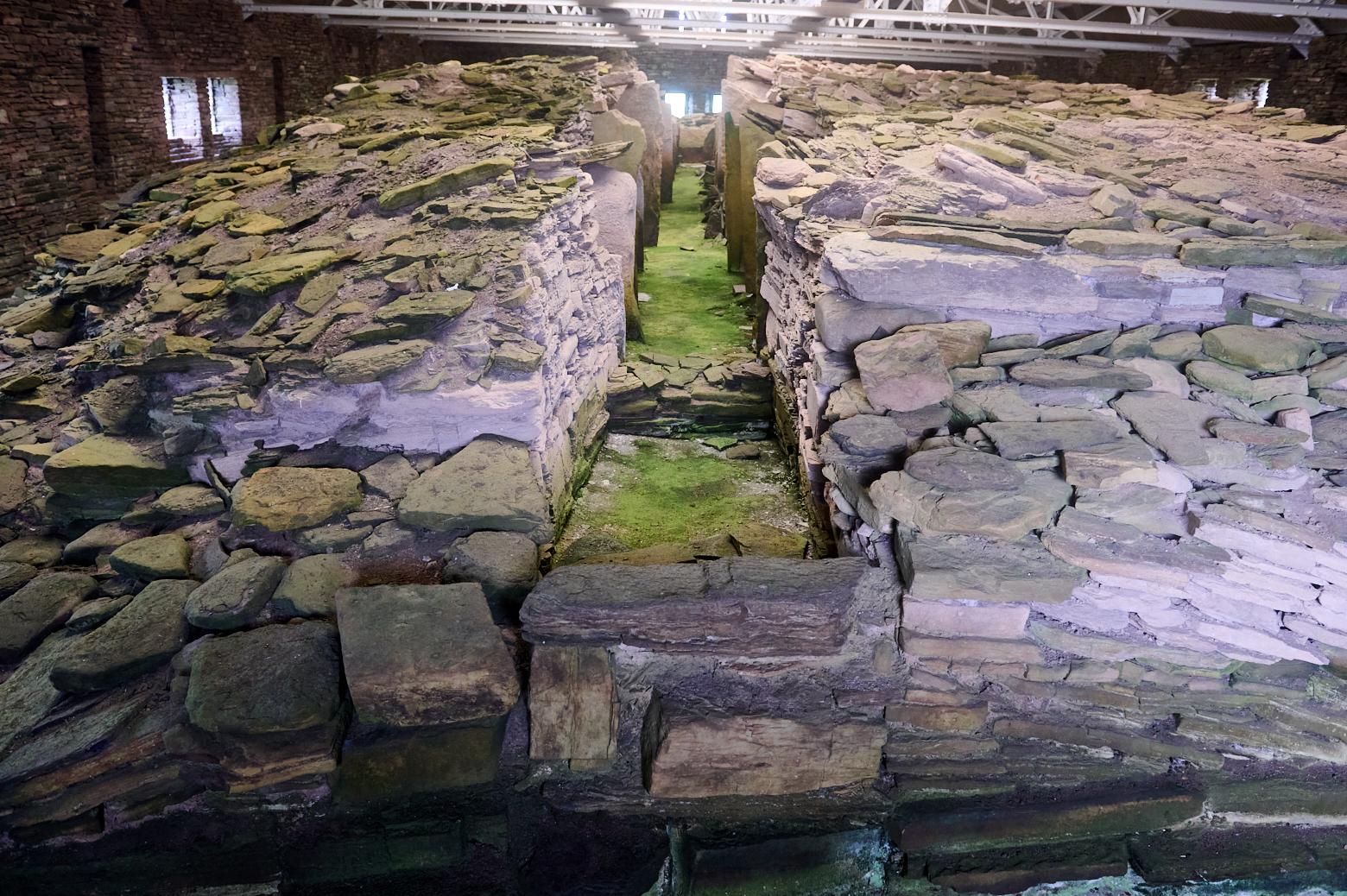
From the outside, it looks like a big hangar, which was built over the cairn to protect it. Inside one can walk around the cairn and also go above it and catch a glimpse of the inside chambers.
Midhowe is one of 15 Neolithic chambered tombs on Rousay and Midhowe cairn is the biggest one found on Rousay. First excavated in the 1930s it contained human remains, animal bones, pottery and worked flint.
The cairn is 32,5 m long and divided by slaps into 12 slaps and probably dates from around 3500 BC.
Midhowe Broch
Walking out of the hangar again I continue the short walk down to the broch right next to the cairn.
Midhowe Broch was built on a narrow promontory beside Eynhallow Sound more than 2,000 years ago. A thick stone barrier and ditch across the neck of the promontory defend it from the landward side. The remainder of the settlement is surrounded by the sea – indeed, part of it has been lost to coastal erosion. (Historic Enviroment Scotland)

There are the remains of around 500 brochs all over Scotland and we find the most in Shetland, Orkney and Caithness, but rarely are they as dense as along the shores of Eynhallow Sound, on the north-east coast of Orkney’s Mainland and the south-west coast of Rousay.
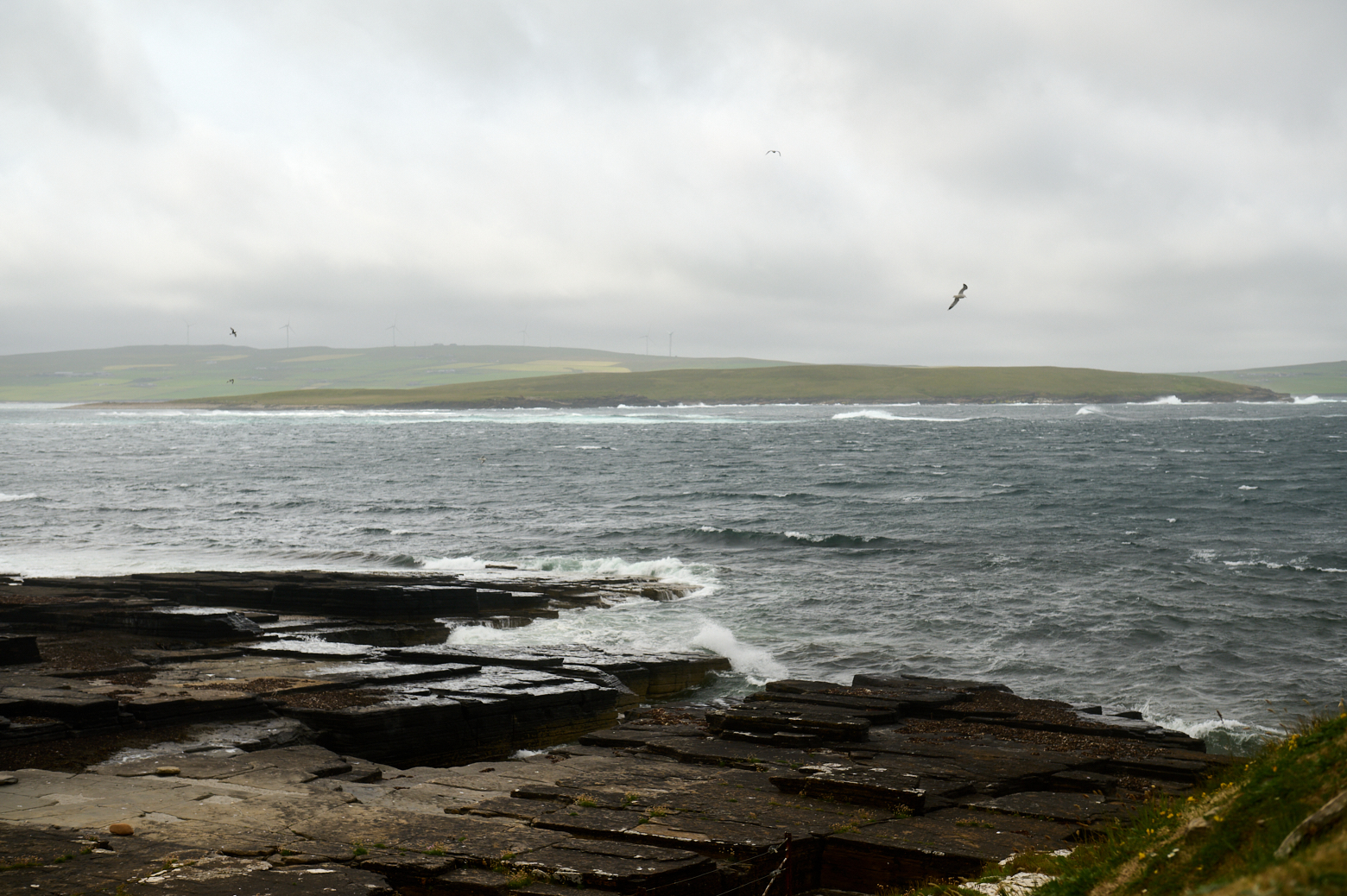
Midhowe broch is almost exactly vis à vis from Gurness broch.
Midhowe Broch was built some time in the last centuries BC. It occupies a naturally defensive site on a promontory. The name “Midhowe” means middle mound and this is just one of three brochs closely grouped together.
North Howe Broch still lies under a mound in the next field to the north-west, while South Howe Broch lies a few hundred yards to the south-east: close to the ruined farmstead of Brough, and steadily being cut away by the sea. There are the remains of another four brochs along the five miles of shoreline between South Howe Broch and Trumland Pier. (Undiscovered Scotland)

There are always discussions if brochs were supposed to be for defence or just a way of living, but this broch was definitely built to withstand. Due to its location and the channels in the rocks access to the broch wasn´t made easy.
Originally probably around 12m high the walls reach around 4m today. Large flagstones divide the inside into smaller rooms, and stairs within the two walls were used to reach the higher floors.
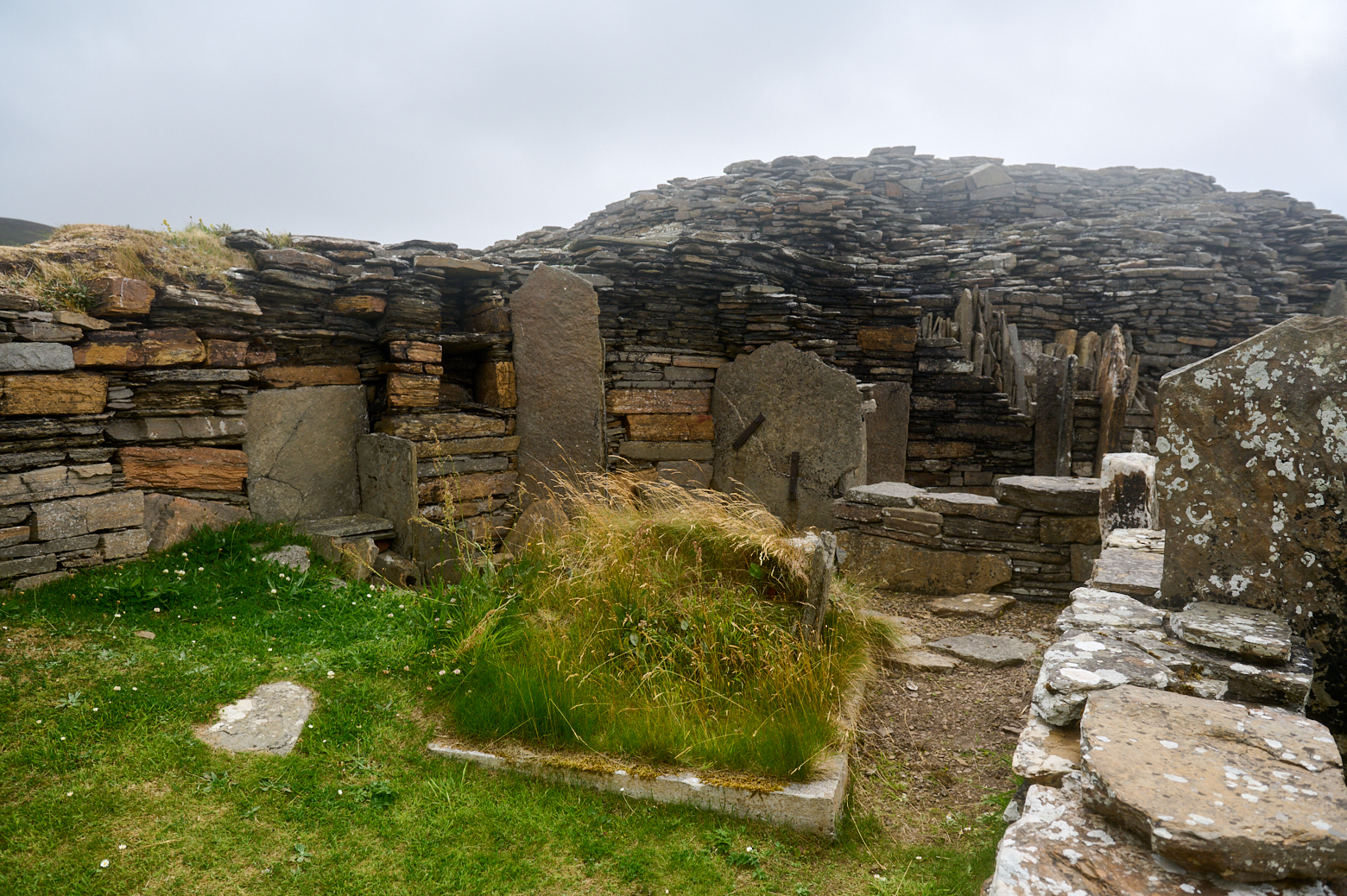
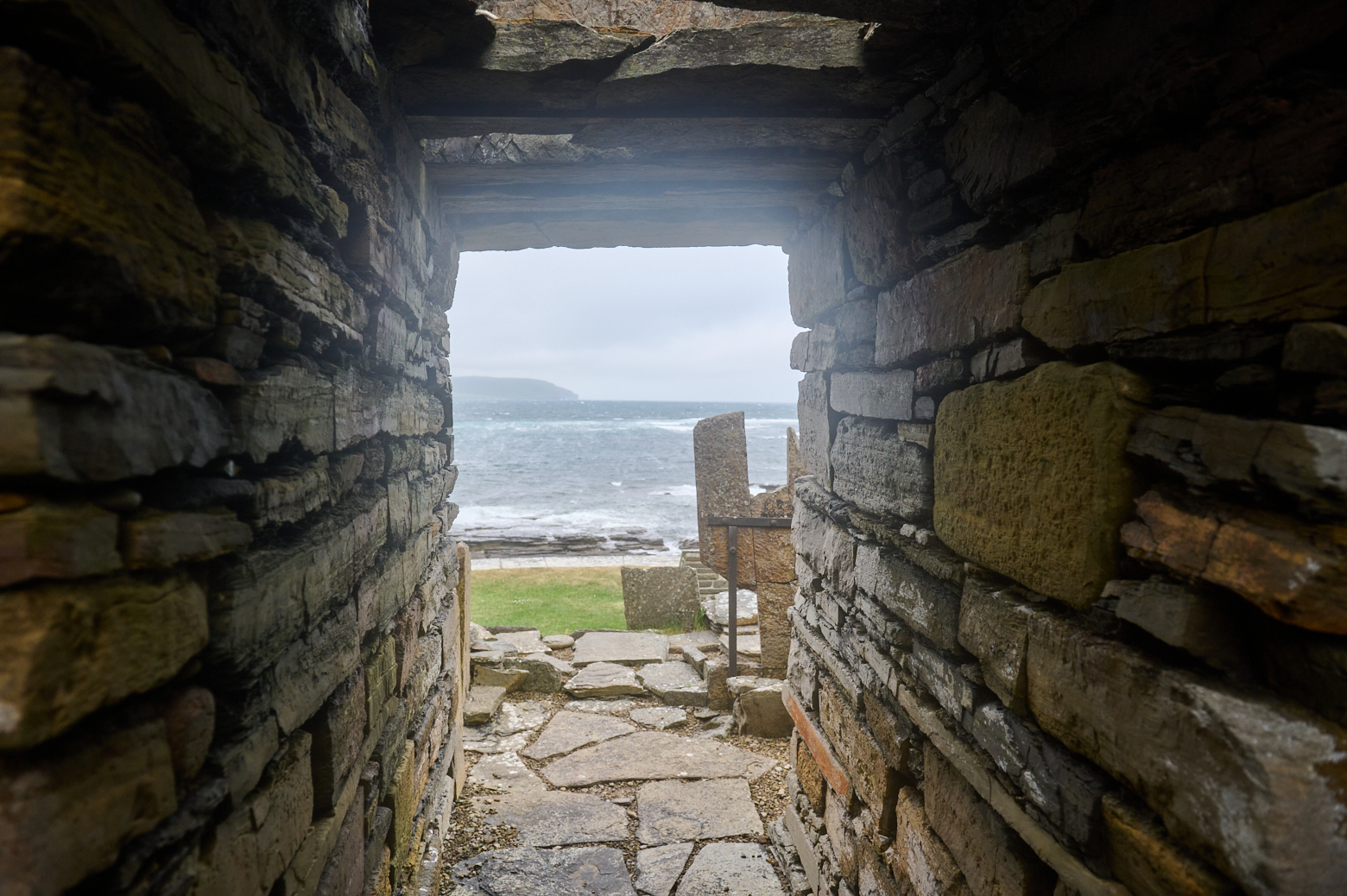
Around the main building, we again find the remains of other buildings and workspaces, which were added at a later date.
Pottery and other artefacts found during excavation give evidence that these were still in use at a time when the area had trading links with the Roman Empire. (Undiscovered Scotland)
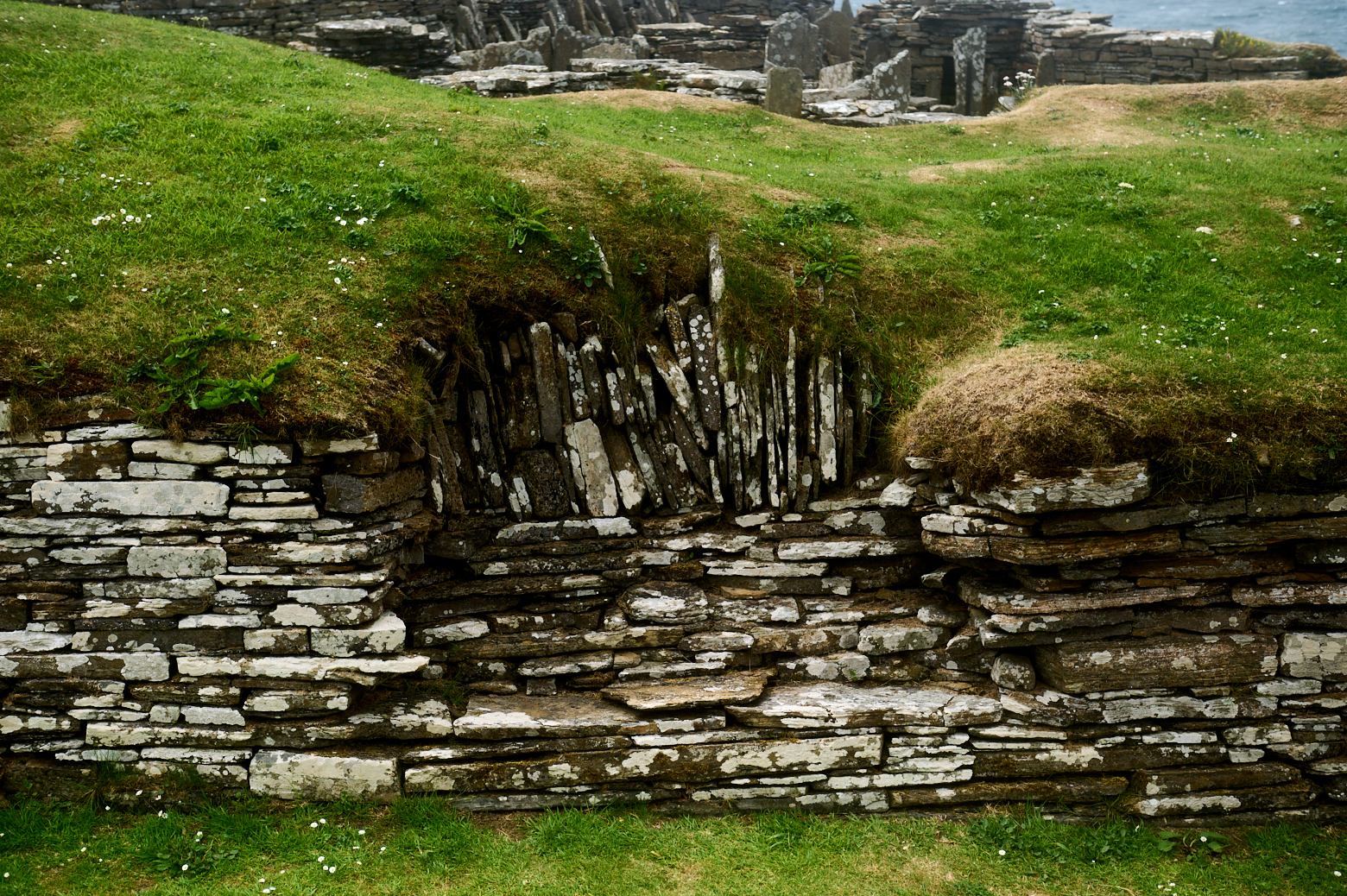
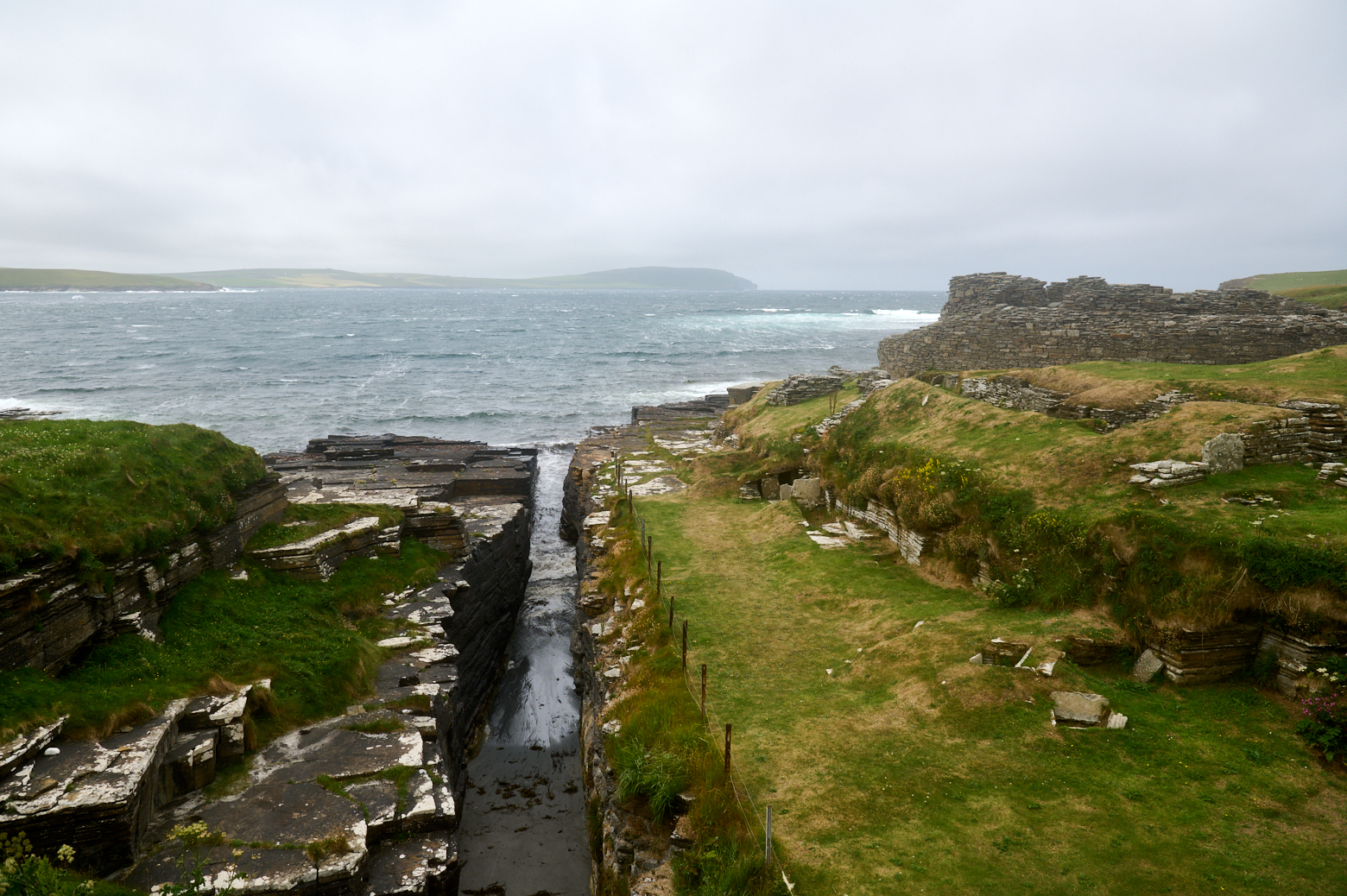
I walked back up the hill towards my car and just got inside before it really started pouring down. I still continued on the road that circles around Rousay but the rain and wind got so bad that I didn´t see a lot more. And it was definitely no weather for my planned walk and picnic.

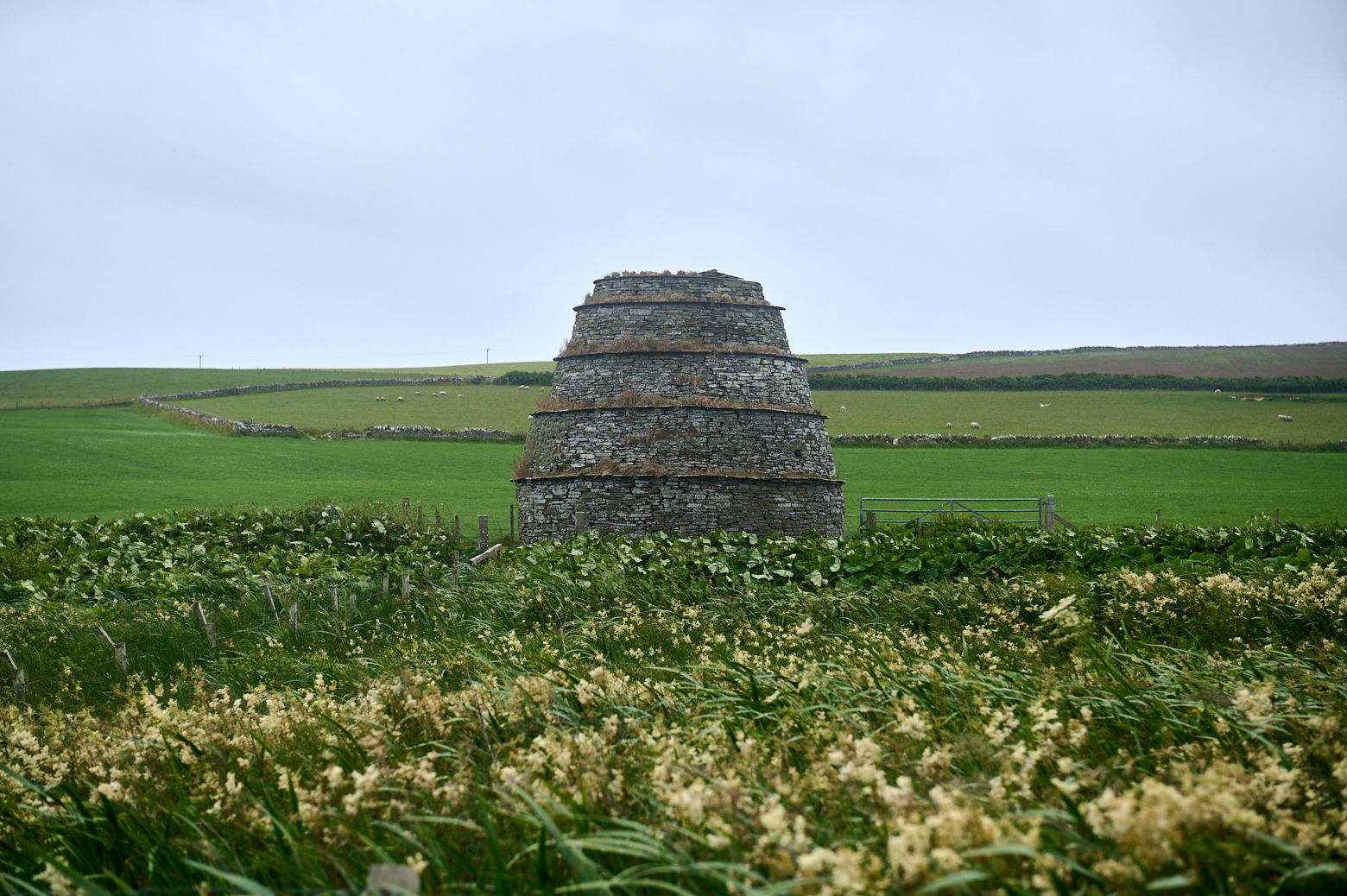
So I decided to try my luck if there was a spot for me on an earlier ferry and just go back to Evie and have a lazy afternoon in my lovely airbnb.
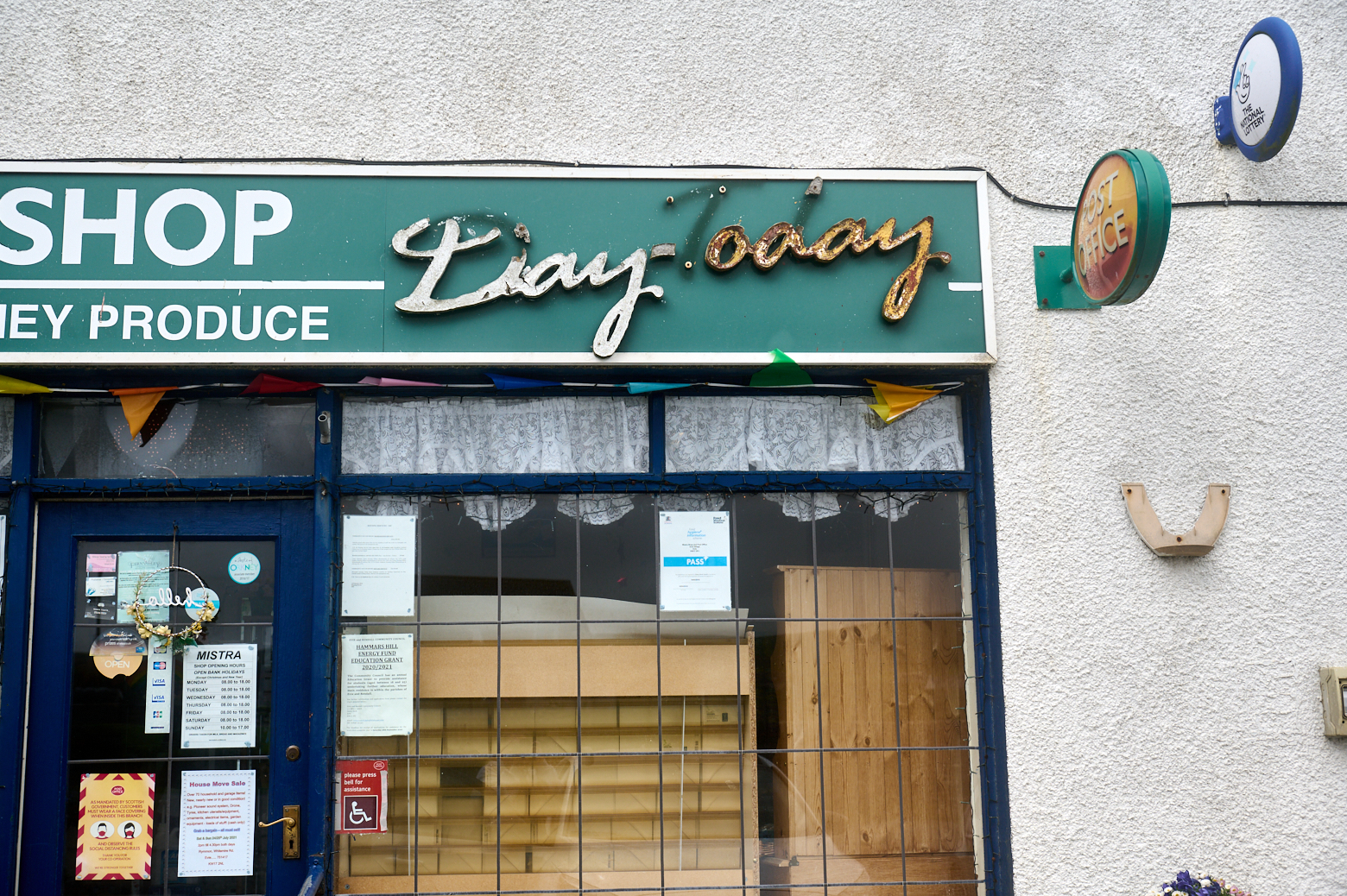
In case you are wondering, I was lucky and I wasn´t the only one, we all kind of went to the ferry and asked if we could take it.
